8 Stunning New Images From Neuroscience
By Emily Baumgaertner Dec. 22, 2023
- Share full article

This is not a work of art. It’s an image of microscopic blood flow in a rat’s brain , taken with one of many new tools that are yielding higher levels of detail in brain imaging.
Here are seven more glorious images from neuroscience research →
The complex circuitry of the brain above was captured by a new M.R.I. scanner developed at the University of California, Berkeley.
The machine has a resolution 10 times better than its precursors’ and could help researchers examine the processes underlying illnesses like schizophrenia and autism.
Scientists at Tufts and Harvard Universities used human cells to build minuscule robots, like the one above, called “Anthrobots” that they say can move across patches of neural tissue in lab dishes and heal wounded areas therein.
The bots can be as thin as a strand of hair, and the tiny follicles sticking out from their edges allow them to travel.
This image, from the same researchers, captures a group of the multicellular robots in action.
The green shows the bots aggregated together as a “superbot,” and the red coloring shows the growth of neurons over a gap where scientists had previously stripped them away.
Cancer researchers in the Netherlands grew this miniature brain cortex that mimics a real one in order to better understand how the cortex develops — and how pediatric brain tumors might arise .
The model, called an organoid, is self-organizing and has the same general shape, architecture and properties as the real thing. Its various neurons are shown in different colors.
This is the visual cortex of a person with Alzheimer’s disease — and that giant blue web depicts a brain cell called an astrocyte .
Astrocytes typically help form and protect the brain’s connections, but a recent set of images, including this one, suggests the cells can engulf and attack the brain’s synapses (shown here as fluorescent dots). This contributes to the deterioration in the mind.
If this looks like a blossoming tree to you, look again: The trunk is a spinal nerve, the green leaves are neurons, the yellow dots are immune cells and the red and orange florets make up a sea of tumor cells in a devastating disorder called neurofibromatosis Type 2.
Researchers at Massachusetts General Hospital used fluorescent labels to stain the elements of this complex system, with the ultimate aim of developing new therapies to treat it .
See that wiggly thing that looks a bit like Medusa? That’s a network of capillaries in the brain that helps produce cerebral fluid — and in this image, it’s under attack.
Scientists studying ways to control the spread of brain cancer captured this visual after modifying breast cancer cells and implanting them into a mouse brain . They watched as local neural cells called astrocytes (shown in yellow) rushed in, actually helping the tumor grow.
Read more about brain science research.

Advertisement

Featured Topics
Featured series.
A series of random questions answered by Harvard experts.
Explore the Gazette
Read the latest.
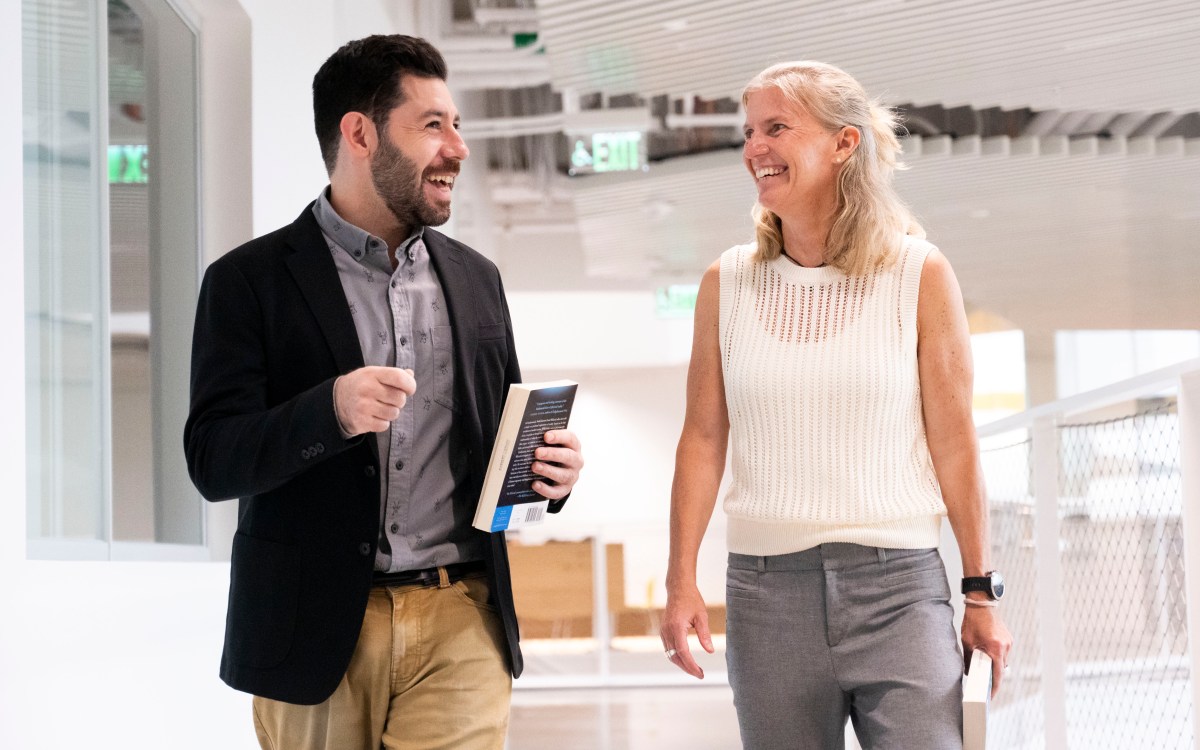
Professor tailored AI tutor to physics course. Engagement doubled.

Did lawmakers know role of fossil fuels in climate change during Clean Air Act era?

Spin squeezing for all
Epic science inside a cubic millimeter of brain.
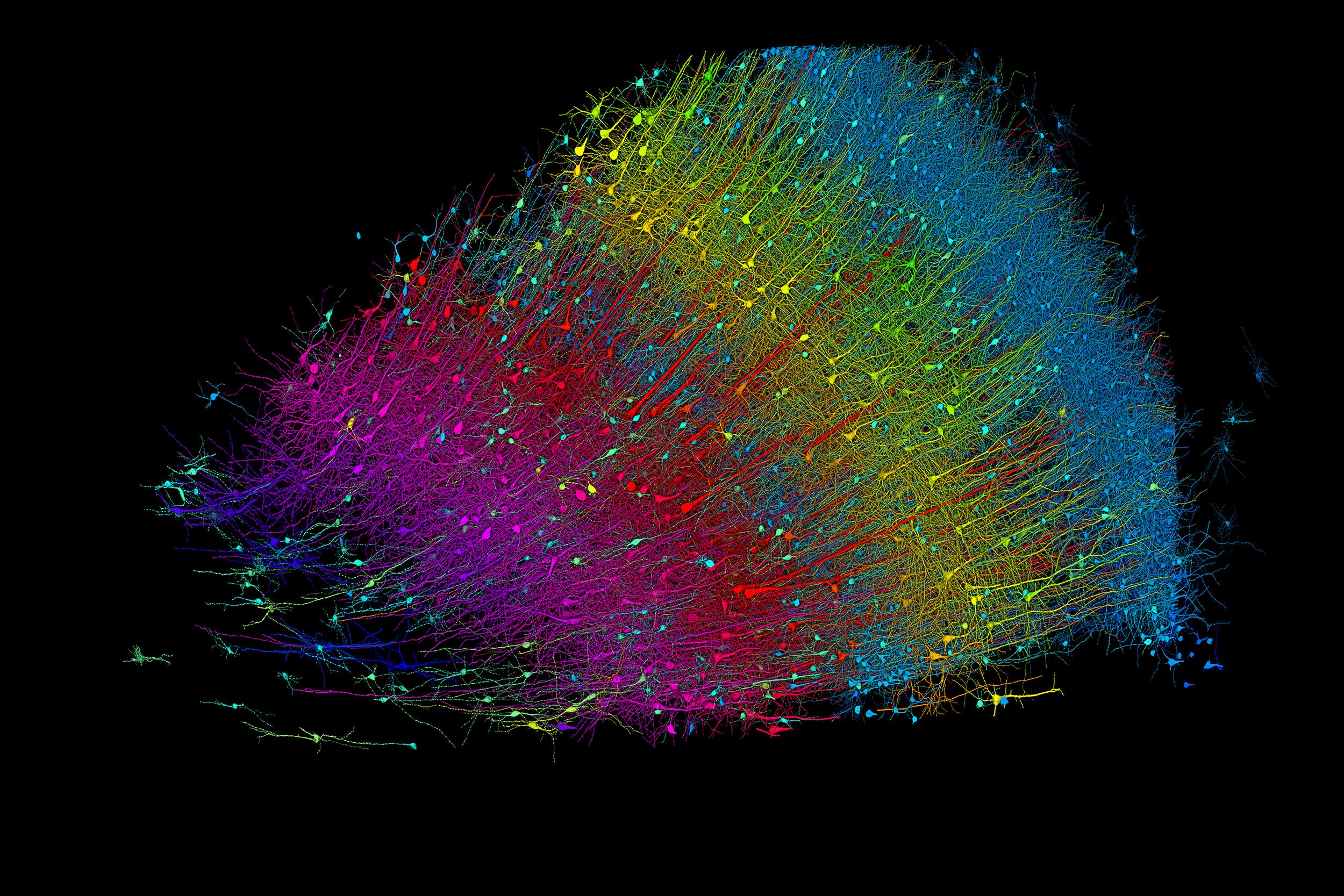
Six layers of excitatory neurons color-coded by depth.
Credit: Google Research and Lichtman Lab
Anne J. Manning
Harvard Staff Writer
Researchers publish largest-ever dataset of neural connections
A cubic millimeter of brain tissue may not sound like much. But considering that that tiny square contains 57,000 cells, 230 millimeters of blood vessels, and 150 million synapses, all amounting to 1,400 terabytes of data, Harvard and Google researchers have just accomplished something stupendous.
Led by Jeff Lichtman, the Jeremy R. Knowles Professor of Molecular and Cellular Biology and newly appointed dean of science , the Harvard team helped create the largest 3D brain reconstruction to date, showing in vivid detail each cell and its web of connections in a piece of temporal cortex about half the size of a rice grain.
Published in Science, the study is the latest development in a nearly 10-year collaboration with scientists at Google Research, combining Lichtman’s electron microscopy imaging with AI algorithms to color-code and reconstruct the extremely complex wiring of mammal brains. The paper’s three first co-authors are former Harvard postdoc Alexander Shapson-Coe, Michał Januszewski of Google Research, and Harvard postdoc Daniel Berger.
The ultimate goal, supported by the National Institutes of Health BRAIN Initiative , is to create a comprehensive, high-resolution map of a mouse’s neural wiring, which would entail about 1,000 times the amount of data the group just produced from the 1-cubic-millimeter fragment of human cortex.
“The word ‘fragment’ is ironic,” Lichtman said. “A terabyte is, for most people, gigantic, yet a fragment of a human brain — just a minuscule, teeny-weeny little bit of human brain — is still thousands of terabytes.”
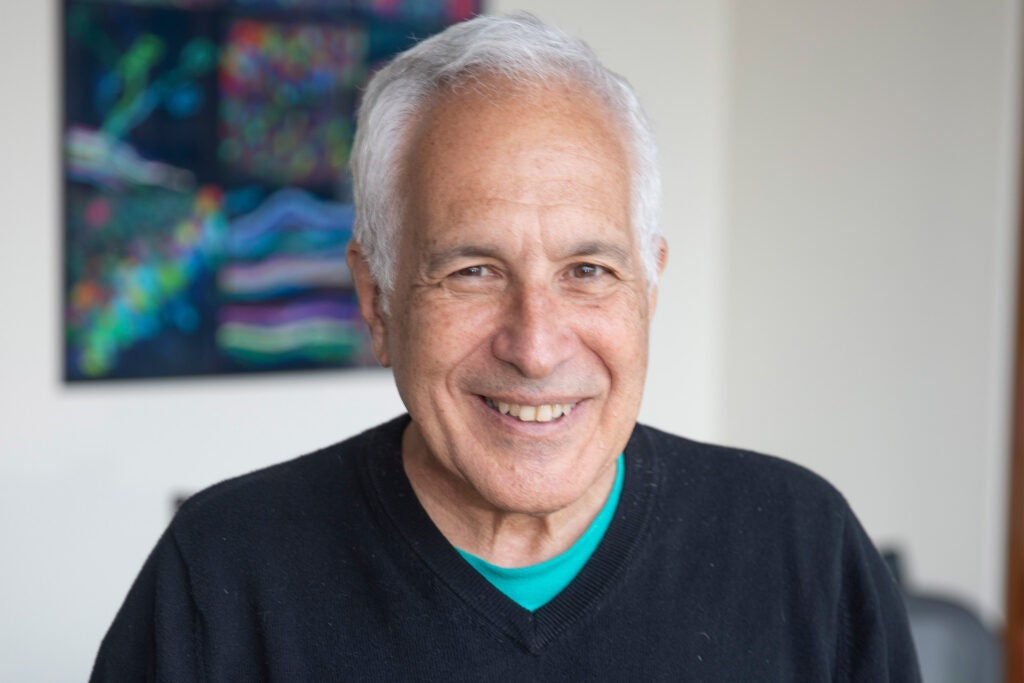
Jeff Lichtman.
Kris Snibbe/Harvard Staff Photographer
The latest map contains never-before-seen details of brain structure, including a rare but powerful set of axons connected by up to 50 synapses. The team also noted oddities in the tissue, such as a small number of axons that formed extensive whorls. Because the sample was taken from a patient with epilepsy, the researchers don’t know whether such formations are pathological or simply rare.
Lichtman’s field is connectomics, which seeks to create comprehensive catalogs of brain structure, down to individual cells. Such completed maps would unlock insights into brain function and disease, about which scientists still know very little.
Google’s state-of-the-art AI algorithms allow for reconstruction and mapping of brain tissue in three dimensions. The team has also developed a suite of publicly available tools researchers can use to examine and annotate the connectome.
“Given the enormous investment put into this project, it was important to present the results in a way that anybody else can now go and benefit from them,” said Google collaborator Viren Jain.
Next the team will tackle the mouse hippocampal formation, which is important to neuroscience for its role in memory and neurological disease.
Share this article
You might like.

Preliminary findings inspire other large Harvard classes to test approach this fall

New study suggests they did, offering insight into key issue in landmark 2022 Supreme Court ruling on EPA
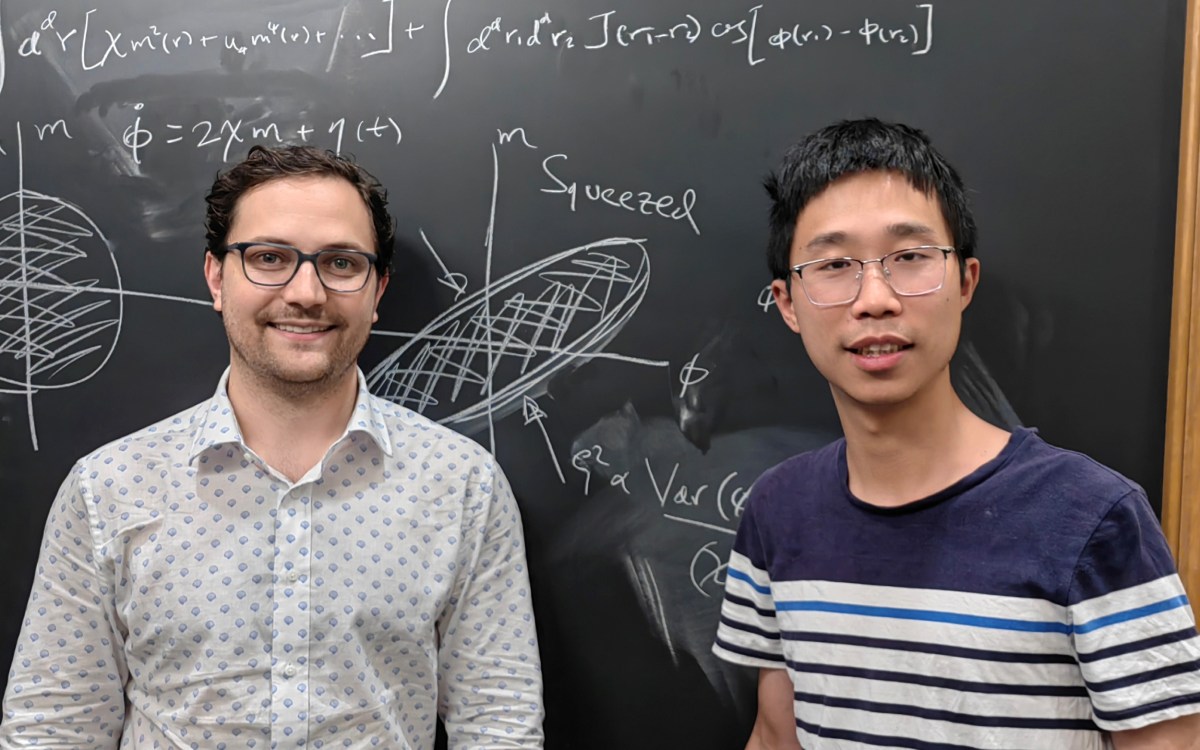
Physicists ease path to entanglement for quantum sensing
Billions worldwide deficient in essential micronutrients
Inadequate levels carry risk of adverse pregnancy outcomes, blindness
You want to be boss. You probably won’t be good at it.
Study pinpoints two measures that predict effective managers
Weight-loss drug linked to fewer COVID deaths
Large-scale study finds Wegovy reduces risk of heart attack, stroke
Suggestions or feedback?
MIT News | Massachusetts Institute of Technology
- Machine learning
- Sustainability
- Black holes
- Classes and programs
Departments
- Aeronautics and Astronautics
- Brain and Cognitive Sciences
- Architecture
- Political Science
- Mechanical Engineering
Centers, Labs, & Programs
- Abdul Latif Jameel Poverty Action Lab (J-PAL)
- Picower Institute for Learning and Memory
- Lincoln Laboratory
- School of Architecture + Planning
- School of Engineering
- School of Humanities, Arts, and Social Sciences
- Sloan School of Management
- School of Science
- MIT Schwarzman College of Computing
Neuroscience
Download RSS feed: News Articles / In the Media / Audio
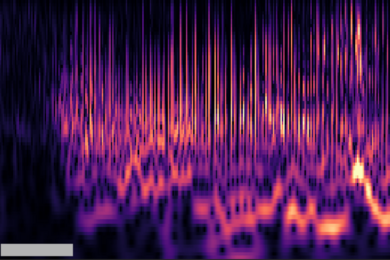
Study assesses seizure risk from stimulating the thalamus
In animal models, even low stimulation currents can sometimes still cause electrographic seizures, researchers found.
September 6, 2024
Read full story →
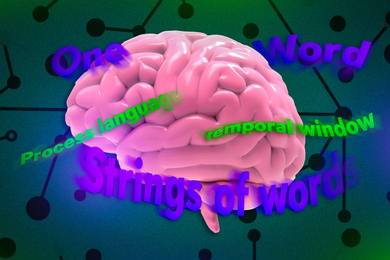
Scientists find neurons that process language on different timescales
In language-processing areas of the brain, some cell populations respond to one word, while others respond to strings of words.
August 26, 2024

New open-source tool helps to detangle the brain
The software tool NeuroTrALE is designed to quickly and efficiently process large amounts of brain imaging data semi-automatically.
August 14, 2024
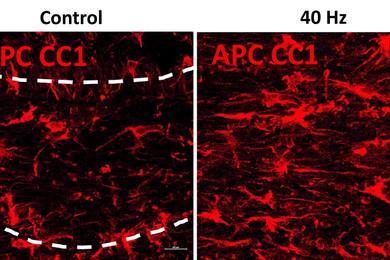
Study reveals ways in which 40Hz sensory stimulation may preserve brain’s “white matter”
Gamma frequency light and sound stimulation preserves myelination in mouse models and reveals molecular mechanisms that may underlie the benefit.
August 13, 2024
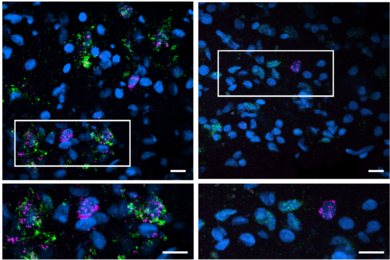
Study across multiple brain regions discerns Alzheimer’s vulnerability and resilience factors
Genomics and lab studies reveal numerous findings, including a key role for Reelin amid neuronal vulnerability, and for choline and antioxidants in sustaining cognition.
July 24, 2024

What is language for?
Drawing on evidence from neurobiology, cognitive science, and corpus linguistics, MIT researchers make the case that language is a tool for communication, not for thought.
July 3, 2024
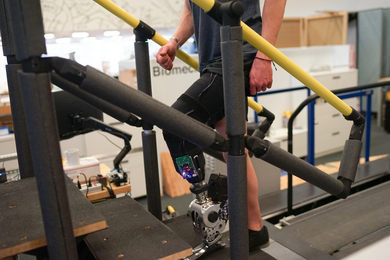
A prosthesis driven by the nervous system helps people with amputation walk naturally
A new surgical procedure gives people more neural feedback from their residual limb. With it, seven patients walked more naturally and navigated obstacles.
July 1, 2024
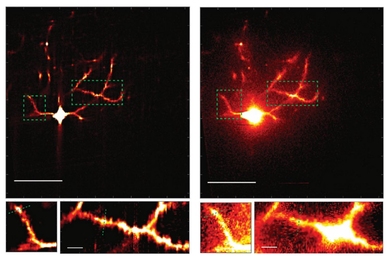
Microscope system sharpens scientists’ view of neural circuit connections
A newly described technology improves the clarity and speed of using two-photon microscopy to image synapses in the living brain.
June 18, 2024
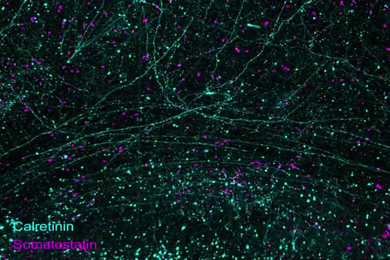
Technologies enable 3D imaging of whole human brain hemispheres at subcellular resolution
Three innovations by an MIT-based team enable high-resolution, high-throughput imaging of human brain tissue at a full range of scales, and mapping connectivity of neurons at single-cell resolution.
June 17, 2024
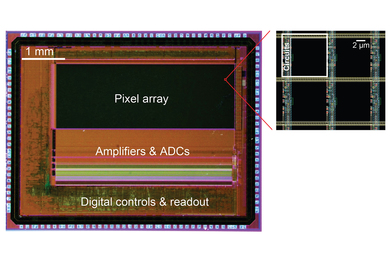
With programmable pixels, novel sensor improves imaging of neural activity
New camera chip design allows for optimizing each pixel’s timing to maximize signal-to-noise ratio when tracking real-time visual indicator of neural voltage.
June 13, 2024

Symposium highlights scale of mental health crisis and novel methods of diagnosis and treatment
Co-hosted by the McGovern Institute, MIT Open Learning, and others, the symposium stressed emerging technologies in advancing understanding of mental health and neurological conditions.
June 12, 2024

Just thinking about a location activates mental maps in the brain
MIT neuroscientists have found that the brain uses the same cognitive representations whether navigating through space physically or mentally.

Nancy Kanwisher, Robert Langer, and Sara Seager named Kavli Prize Laureates
MIT scientists honored in each of the three Kavli Prize categories: neuroscience, nanoscience, and astrophysics, respectively.

Study models how ketamine’s molecular action leads to its effects on the brain
New research addresses a gap in understanding how ketamine’s impact on individual neurons leads to pervasive and profound changes in brain network function.
June 4, 2024
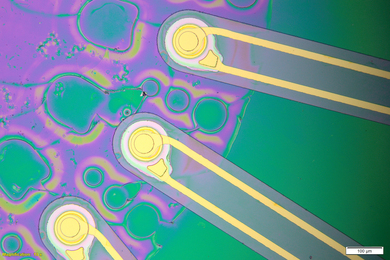
Ultrasound offers a new way to perform deep brain stimulation
MIT engineers’ implantable ImPULS device could become an alternative to the electrodes now used to treat Parkinson’s and other diseases.
Massachusetts Institute of Technology 77 Massachusetts Avenue, Cambridge, MA, USA
- Map (opens in new window)
- Events (opens in new window)
- People (opens in new window)
- Careers (opens in new window)
- Accessibility
- Social Media Hub
- MIT on Facebook
- MIT on YouTube
- MIT on Instagram
Every print subscription comes with full digital access
Science News
Neuroscience.

A hunger protein reverses anorexia symptoms in mice
Boosting levels of protein ACBP spurred the mice to eat and gain weight. It is unclear if any drugs based on the protein might help people with anorexia.
‘Then I Am Myself the World’ ponders what it means to be conscious
Alzheimer’s blood tests are getting better, but still have a ways to go, more stories in neuroscience, psilocybin temporarily dissolves brain networks.
A high dose of the psychedelic drug briefly throws the brain off kilter. Other, longer-lasting changes could hint at psilocybin's therapeutic effects.

Bird flu has been invading the brains of mammals. Here’s why
Although H5N1 and its relatives can cause mild disease in some animals, these viruses are more likely to infect brain tissue than other types of flu.

Breastfeeding should take a toll on bones. A brain hormone may protect them
The hormone CCN3 improves bone strength even as breastfeeding saps bones of calcium, a study in mice shows.

‘Do I Know You?’ explores face blindness and the science of the mind
In her memoir, journalist Sadie Dingfelder draws on her own experiences to highlight the astonishing diversity of people’s inner lives.

Pain may take different pathways in men and women
Sex differences in the function of nerve cells in mice, monkeys and humans suggest a new way to treat pain conditions.

Biological puzzles abound in an up-close look at a human brain
Mirror-image nerve cells, tight bonds between neuron pairs and surprising axon swirls abound in a bit of gray matter smaller than a grain of rice.

Two distinct neural pathways may make opioids like fentanyl so addictive
A study in mice looked at how feelings of reward and withdrawal that opioids trigger play out in two separate circuits in the brain.

The heart plays a hidden role in our mental health
Deciphering the messages that the heart sends to the brain could lead to new anxiety treatments and even unlock the secrets of consciousness.

How smart was T. rex ?
A debate over how to count neurons in dinosaurs is raising questions about how to understand extinct animals’ behavior.
Subscribers, enter your e-mail address for full access to the Science News archives and digital editions.
Not a subscriber? Become one now .
December 16, 2022
This Year’s Most Thought-Provoking Brain Discoveries
Neural circuits that label experiences as “good” or “bad” and the emotional meaninglessness of facial expressions are some standouts among 2022’s mind and brain breakthroughs
By Gary Stix
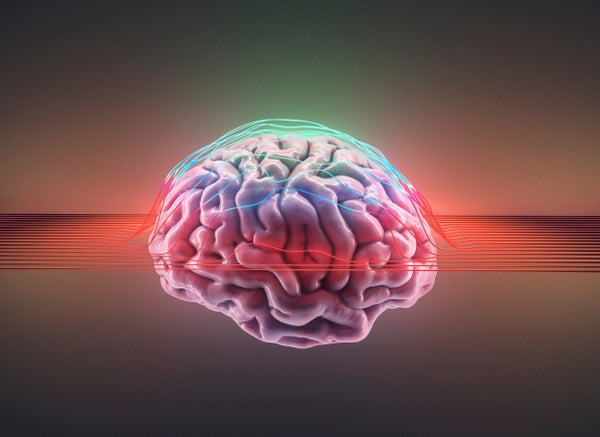
Jonathan Kitchen/Getty Images
Can the human brain ever really understand itself? The problem of gaining a deep knowledge of the subjective depths of the conscious mind is such a hard problem that it has in fact been named the hard problem.
The human brain is impressively powerful . Its 100 billion neurons are connected by 100 trillion wirelike fibers, all squeezed into three pounds of squishy flesh lodged below a helmet of skull. Yet we still don’t know whether this organ will ever be able to muster the requisite smarts to hack the physical processes that underlie the ineffable “quality of deep blue” or “the sensation of middle C,” as philosopher David Chalmers put it when giving examples of the “hard problem” of consciousness, a term he invented, in a 1995 paper.
This past year did not uncover a solution to the hard problem, and one may not be forthcoming for decades, if ever. But 2022 did witness plenty of surprises and solutions to understanding the brain that do not require a complete explanation of consciousness. Such incrementalism could be seen in mid-November, when a crowd of more than 24,000 attendees of the annual Society for Neuroscience meeting gathered in San Diego, Calif. The event was a tribute of sorts to reductionism—the breaking down of hard problems into simpler knowable entities. At the event, there were reports of an animal study of a brain circuit that encodes social trauma and a brain-computer interface that lets a severely paralyzed person mentally spell out letters to form words.
On supporting science journalism
If you're enjoying this article, consider supporting our award-winning journalism by subscribing . By purchasing a subscription you are helping to ensure the future of impactful stories about the discoveries and ideas shaping our world today.
Brain discoveries abounded in 2022—and will certainly continue in 2023. Here’s a look at a few prime pickings from what we published at Scientific American this year.
Your Brain Has a Thumbs-Up–Thumbs-Down Switch
When neuroscientist Kay Tye was pursuing her Ph.D., she was told a chapter on emotion was inappropriate for her thesis. Emotion just wasn’t accepted as an integral, intrinsic part of behavioral neuroscience, her field of study. That didn’t make any sense to Tye. She decided to go her own way to become a leading researcher on feelings. This year Tye co-authored a Nature paper that reported on a kind of molecular switch in rodents that flags an experience as either good or bad. If human brains operate the same way as the brains of the mice in her lab, a malfunctioning thumbs-up–thumbs-down switch might explain some cases of depression, anxiety and addiction.
Facial Expressions Do Not Convey What You’ve Been Taught about Someone’s Emotional Demeanor
Charles Darwin proposed that facial expressions are universal: a smile conveys happiness; a frown indicates sadness. He was wrong, suggests research published in recent years. Investigators found that innate expressions grounded in biology do not exist—and instead are highly variable. Neuroscientist Lisa Feldman Barrett warned in an essay that a recognition of Darwin’s fallacy has implications for AI facial recognition systems intended to detect emotions.
Your Kid May Be a Dandelion and an Orchid—And even a Tulip
Pigeonholing a child as either sensitive or resilient is probably a mistake. That child is not necessarily just an “orchid”—overly sensitive to adverse experiences—or a “dandelion”—relatively immune to such events. Newly arrived in the mix are “tulips,” children who experience modest effects from what’s happening around them. But even this floral triad might not suffice. Many kids are psychological mixes, mosaics, studies showed this past year . They display sensitivity to some but not all influences around them, depending on a particular situation.
If You See Something, It May Help You to Say Something
In a marriage of neuroscience and pedagogy, researchers tried to assess what a curriculum that emphasized the learning of spatial skills would do for kids. One example: an assignment that involved creating a map to track bears in the Blue Ridge Mountains. Kids at five Virginia high schools took courses, and their performance was matched against another group that received lessons without the spatial-learning component. The results of the research , published in August, showed that students in the spatial learning group improved not only spatial skills but also verbal abilities—figuring out a problem using words.
- See us on facebook
- See us on twitter
- See us on youtube
- See us on linkedin
- See us on instagram
Stanford Medicine magazine explores the brain and nervous system
The new issue of Stanford Medicine magazine features articles about developments in neuroscience and treatments for conditions affecting the brain and nervous system.
October 14, 2021 - By Rosanne Spector
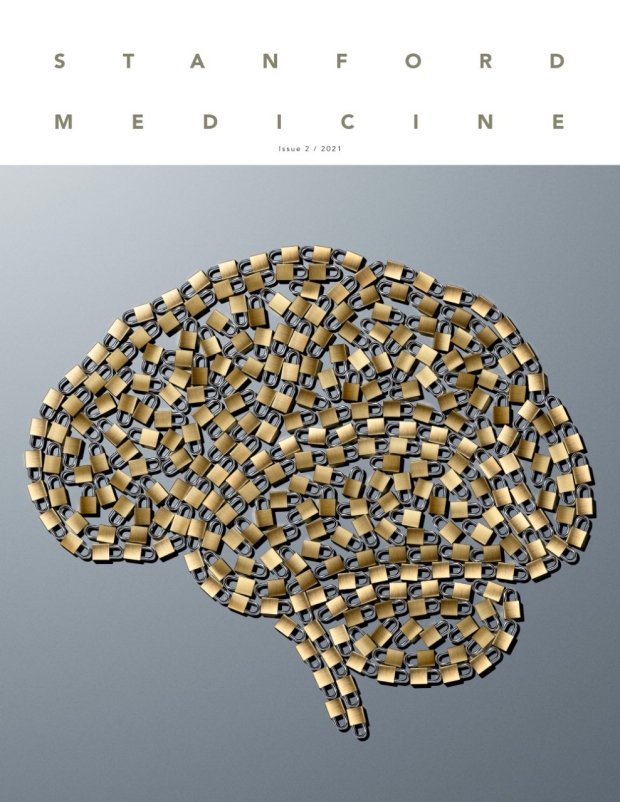
The new issue of Stanford Medicine magazine focuses on how researchers are unlocking secrets of the brain. Illustration by Craig Cutler
The brain has long been a black box and, until recently, we were in the dark about anything that might have gone wrong under its lid and what to do about it. That’s changing.
A themed section of the new issue of Stanford Medicine magazine, “The most mysterious organ: Unlocking the secrets of the brain,” provides new insights into neurological conditions ranging from Alzheimer’s disease to stroke and conveys clinicians’ optimism about the relatively recent understanding that the brain is surprisingly adaptable. As Lloyd Minor, MD, dean of the Stanford University School of Medicine, wrote in his letter to readers :
“One of our most fascinating discoveries is that the brain isn’t as fixed and fragile as we once believed. The organ we thought was set in its ways by our late 20s is much more active — and resilient — for our entire lives.”
Advances in brain imaging and a more accurate understanding of the brain’s workings are enabling researchers and health care practitioners to develop new treatments. Some of these are available only at Stanford Medicine through clinical trials, while others have been adopted around the world.
The issue includes:
• A roundup of research and treatments aimed at addressing diseases of the brain and nervous system. These advances are enabling the paralyzed to move and the blind to see . They’re also suggesting strategies for preventing the loss of cognitive abilities .
• An article about brain trauma data from the U.S. Department of Veterans Affairs revealing that women have a more difficult recovery from severe brain trauma than men do. The article is accompanied by a video featuring neurosurgery faculty members Odette Harris, MD, and Maheen Adamason, PhD, and a veteran talking about her experience of severe brain trauma.
• A story of the decadeslong quest to save more stroke patients from a life of disability. It was a tough sell to other neurosurgeons, but research by Gregory Albers, MD, and a team of researchers eventually succeeded in extending the window for effective treatment from just a few hours to a full day.
• A recounting of a high-stakes, innovative surgery to save a toddler’s life by removing a brain tumor through his nose .
• A Q&A with renowned flutist Eugenia Zukerman in which she reflects on the healing power of writing during the early stages of Alzheimer’s disease, her first book of poetry and the hope her poetry offers other patients.
• An article about an experimental treatment for Parkinson’s disease that seems like magic: a vibrating glove that reduces symptoms for patients who wear it a few hours a day.
• An essay adapted from a new book by psychiatry professor Karl Deisseroth , MD, PhD, Projections : A Story of Human Emotions , that describes an encounter with a young man who couldn’t cry and the neurological mechanisms behind shedding tears of joy and sorrow.
• A story about the efforts of neurosurgery chair Michael Lim, MD, to apply the successes of immunotherapy cancer treatments to some of the most pernicious tumors — those that originate in the brain.
• An article about an unusual surgery for a rare disease: Hope Kim needed a second bypass surgery to treat the brain disorder moyamoya , but no blood vessels in the scalp were right for the job. What to do? Professor of neurosurgery Gary Steinberg, MD, PhD, piped a blood vessel from her abdomen up to her brain.
This issue also includes a profile of associate professor of bioengineering Drew Endy, PhD, who believes that solving civilization’s most vexing challenges depends on harnessing “bioengineering to flourish in partnership with nature,” and excerpts from The Puzzle Solver , by Stanford Medicine science writer Tracie White with professor of genetics and of biochemistry Ron Davis, PhD. The book describes Davis’ desperate attempt to find a cure for severe chronic fatigue syndrome, also known as myalgic encephalomyelitis, which has left his son bedridden by pain, fatigue and other disabling symptoms.
Stanford Medicine magazine is available online at stanmed.stanford.edu as well as in print. Print copies of the new issue are being sent to subscribers. Others can request a copy by sending an email to [email protected] .

About Stanford Medicine
Stanford Medicine is an integrated academic health system comprising the Stanford School of Medicine and adult and pediatric health care delivery systems. Together, they harness the full potential of biomedicine through collaborative research, education and clinical care for patients. For more information, please visit med.stanford.edu .
The majestic cell
How the smallest units of life determine our health


New frontiers in neuroscience
Vol. 53 No. 1 Print version: page 62
- Cognition and the Brain
- Neuropsychology
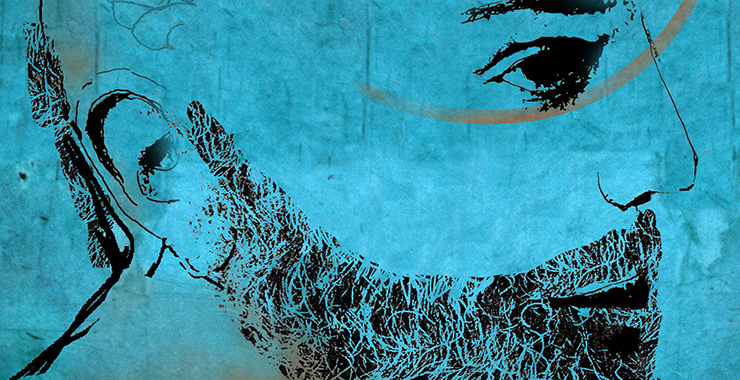
Understanding human behavior is the crux of psychologists’ work and neuroscience is part of that understanding. To better grasp the mental processes that undergird thoughts, emotions, and behaviors, psychologists have long worked together with the neuroscientists who study the structure and processes of the brain and nervous system. Psychology and neuroscience overlap now more than ever as technology advances, which means psychologists have more opportunities to improve people’s lives by understanding how nervous system activity drives complex thoughts and behaviors linked to mental health treatment and prevention. Neuroscientists, too, can learn more about their field through the work of psychologists.
“The brain creates the mind, so understanding how this happens shines new light on our psychological theories and interventions,” said Kristen A. Lindquist , PhD, an associate professor of psychology and neuroscience at the University of North Carolina (UNC) at Chapel Hill. “In turn, understanding psychological theory and measurement of behavior means we can understand the functional meaning of firing neurons and blood flow to brain regions.”
While psychologists’ understanding of the biological processes involved in behavior has been evolving for years, a few neuroscience-related trends stood out in 2021.
Brain connectivity
Neuroimaging has long helped researchers understand the brain regions associated with specific traits or behaviors. More recently, psychologists have begun to study the connectivity between various regions. Rather than simply identifying increased blood flow in one area, psychologists are using advanced technology to study the correlation between blood flow changes in more than one brain region. While typical brain imaging suggests the magnitude of change, connectivity highlights possible dynamics at play in more complex behaviors.
A simple example: If you see a piece of chocolate, your prefrontal cortex may light up along with your pleasure center, suggesting you’re trying to resist the thing you crave. Studying this type of connectivity helps psychologists understand the processes behind certain behaviors and psychological disorders and create better treatments, says Lindquist.
For instance, a psychologist studying self-regulation already knows which area of the brain is active during moments of stress. Understanding how the prefrontal cortex and amygdala engage, and in what direction, could help psychologists diagnose and more effectively treat a patient who struggles to self-regulate.
A meta-analysis published by Lindquist and colleagues in 2020 examined brain connectivity patterns in younger and older adults ( Affective Science , Vol. 1, 2020). They found younger adults have more connectivity in the subcortical regions of the brain that impact reactivity, while those ages 65 to 80 have greater connectivity in the prefrontal cortex, with less neural activity between the prefrontal cortex and other regions—suggesting that young adults may be more responsive to emotional stimuli, while older individuals tend to be less sensitive to these stimuli (and, in general, more content).
While this analysis suggests important ways emotional responses to external stimuli can change across the life span—and that older adults tend to have better emotional experiences than younger ones—it also identifies an important baseline that could help psychologists understand and identify aging-related brain disorders such as geriatric depression and dementia.
“Connectivity research is setting the stage for understanding how brain connectivity is different in people who exhibit typical versus atypical behaviors, which can both help psychologists treat these affective outcomes and help caregivers and family members understand what’s happening in their loved ones,” Lindquist said.
Lindquist is also studying the neural networks at play during episodes of anxiety, and she has found evidence that different connectivity patterns can produce the same experiences of anxiety.
In other words, people can have the same output but different neural pathways to produce it. Jessica Cohen, PhD, director of the Cohen Lab and an assistant professor in the Department of Psychology and Neuroscience at UNC Chapel Hill, and fellow researchers have made significant inroads to measuring these pathways by comparing resting brain activity in people who perform differently on various cognitive tasks. They found that resting patterns of brain connectivity change much more than previously understood, and in ways that are related to subsequent task performance ( Network Neuroscience , Vol. 5, No. 1, 2021).
As scientists continue to study how brain connectivity relates to active cognition and behavior, “these findings offer the possibility that neural networks are more flexible and encode more detailed information in those who perform better,” said Derek J. Snyder, PhD, APA’s senior director for science strategic partnerships. “Overall, studies like these offer new insights on individual differences in brain plasticity across networks that process information and shape complex behaviors linked to well-being,” he said.
Brains converging
Understanding the human mind also requires understanding the social environment—what happens in the brain when we interact with other people. Using brain-imaging studies of pairs in social interactions, psychologists are now able to understand how social dynamics affect cognition, according to Thalia Wheatley , PhD, a professor of human relations at Dartmouth College.
“We’re constantly influencing and adapting to others, relying on one another to help us think,” said Wheatley. “We’ve been so focused as psychologists on mapping out the single brain, and now we’re beginning to understand what happens in the brain when two minds are dynamically engaged.”
A growing body of research has provided a foundation for newer, more complex research about the effects of social interaction on cognition. Uri Hasson , PhD, a professor of psychology and neuroscience at Princeton University, has studied how two brains temporarily converge during communication.
For example, in one 2017 study, Hasson and his colleagues suggested different interpretations of a short story to two groups of participants and used neuroimaging to understand how each interpretation affected their brain activity as they listened to the story. Listeners’ brain activity aligned depending on the context they received before the story, suggesting that information from news sources can shape people’s beliefs and essentially result in groupthink ( Psychological Science , Vol. 28, No. 3, 2017). “If one line is enough to make you similar to other people, imagine how what you are listening to all day does,” Hasson said.
What’s important, Wheatley says, isn’t just that taking in the same information can result in similar brain activity. Science also suggests people are naturally drawn to those who think like them. In one study, Wheatley and colleagues found that friends shared similar brain activity ( Nature Communications , Vol. 9, No. 332, 2018). “The further out you go in a person’s social network, the more dissimilar people’s minds are,” she said.
Wheatley says future work could help psychologists understand not only the importance of conversation between peers, but how couples or parents and children interact. In a 2020 study , Hasson, Wheatley, and colleagues showed participants ambiguous video clips and then had them interpret what they saw in groups. After a period of discussion, the researchers scanned the group and found group members’ brain waves were more synchronized, suggesting conversation can help align people’s brains.
While understanding when synchrony happens is an important piece of the puzzle, Wheatley says, research should also investigate other dynamics such as when people may want to diverge in their thought patterns, breaking synchrony to facilitate independent thought. This understanding not only will help researchers understand cognition but also could help clinicians in practice. “When we understand more about the hidden dynamics of conversation, there will be natural implications for talk therapy,” she said.
Using polygenic risk scores
Thanks to recent advancements in the field of genetics, psychologists are seizing on new opportunities to study the specific genes associated with susceptibility for certain behaviors and, more important, how to use this knowledge to help people.
Even 20 years ago, psychologists referred to a now outdated form of genetic paneling called candidate-gene paneling, which identified individual genes that could predict people’s behaviors. “We thought then, by focusing on just one specific gene rather than a constellation of genes, that if you show expression on a particular candidate gene related to serotonin, you’re more likely to get depressed,” said Daniel S. Shaw , PhD, a professor of psychology at the University of Pittsburgh.
A more comprehensive approach to research known as genome-wide association studies uses algorithms to study the entire genome and identify genes that could contribute to specific behaviors using a scoring model called polygenic scoring, which means psychologists have more basis for understanding risk factors that contribute to hereditary behavioral patterns.
Jinni Su , PhD, an assistant professor of psychology at Arizona State University, says psychologists have been combining their knowledge about the impact of environment on behavior with these polygenic risk scores to help people develop better coping mechanisms.
“The idea that both genes and the environment contribute to complex psychosocial outcomes is not new,” Su said. “Polygenic scoring is a new method that can help psychologists characterize people’s genetic predispositions toward certain behaviors and help us address questions about environmental factors that could exacerbate or lessen that genetic risk.”
For example, Shaw and his colleagues conducted a randomized controlled study to understand how an 8-session, family-based intervention for children ages 2–10 (called the Family Check-Up) might help those with genetic risk factors for aggressive behavior. While untreated children with high genetic susceptibility showed the highest levels of aggressive and oppositional conduct during childhood and adolescence, those receiving the Family Check-Up showed much lower levels. These results suggest that children who are genetically sensitive to adverse environmental influences may benefit the most from early interventions ( Development and Psychopathology , Vol. 31, No. 5, 2019).
Su’s work focuses on genetic and environmental influences on alcohol use disorder, which usually occurs in the teen or adult years. Her studies that show how a genetic predisposition toward alcohol abuse manifests in youth enable families to recognize the signs and respond with evidence-based interventions that can prevent progression of the disorder.
Su found in a study published in 2021 that people with a genetic propensity for alcohol use disorder are more likely to have sensation-seeking personality traits, and that social support can prevent those traits from developing into problem drinking ( Journal of Abnormal Psychology , Vol. 130, No. 5, 2021). This is consistent with earlier research that found that individuals who have a higher polygenic risk score for alcohol dependence are less likely to abuse alcohol if they are in a Family Check-Up intervention group (Kuo, S. I., et al., Prevention Science , Vol. 20, No. 7, 2019).
“Knowing how the genetic risk for alcohol manifests can help us work with sensation seekers and help them find healthy ways to channel their predisposition,” said Su.
In the future, Shaw hopes to see more diverse genetic risk scores—currently, psychologists rely on scoring developed using data from primarily White participants—and further studies that measure genetic susceptibility for other attributes and behaviors. He also hopes geneticists and neuroscientists can work together to more accurately link specific genetic profiles to individual differences in activation or volume in specific areas of the brain. “For example, polygenetic risk scores capturing impulsivity could be linked with the frontal limbic system, so it makes sense a person would be impulsive,” he said.
2022 trends report
- This article is part of our 14 emerging trends special report. Explore our full coverage on how the pandemic era is changing attitudes toward science and mental health .
Recommended Reading
Contact apa.
- Read the complete 2022 trends report .
You may also like
Office of Neuroscience Research
Adding anti-clotting drugs to stroke care ineffective, clinical trial finds

Stroke patients who survive a blood clot in the brain’s blood vessels are prone to developing new blockages during their recovery periods, even if they receive vessel-clearing interventions. In an effort to avoid further clots, doctors at 57 sites around the U.S. tested a possible solution: the addition of anti-coagulant drugs to medicine that dissolves blood clots.
But results from the clinical trial, led by Opeolu Adeoye , MD , head of the Department of Emergency Medicine at Washington University School of Medicine in St. Louis, indicate two such drugs did not improve outcomes.
The findings are available Sept. 4 in The New England Journal of Medicine .
“We’re a little disappointed in the results,” said Adeoye, who is also the BJC HealthCare Distinguished Professor of Emergency Medicine. “But it’s meaningful to optimal patient care that we’ve answered the question definitively. Neither of the drugs helps prevent further clots.”
The goal of the Multi-arm Optimization of Stroke Thrombolysis (MOST) clinical trial that Adeoye led was to test the efficacy of adding argatroban, a blood thinner, or eptifibatide, which inhibits blood platelets from sticking together, to the routine intravenous thrombolysis treatment.
The trial closed the chapter on this potential use of these medications, but Peter Panagos, MD , professor of emergency medicine and co-author on the study, said that efforts like these inform future advances in medicine, including potential new anti-coagulant treatments.
“Without negative trials, we would not know how to design new trials,” Panagos said. “Future success is built upon the hard work of previous research effort.”
Physicians do not have a lot of treatment options for patients who experience a stroke. Some patients undergo a procedure to remove the clot. Others receive intravenous thrombolysis to relieve the affected blood vessel through clot-dissolving medication delivered to the bloodstream. A number of patients receive both interventions.
Read more .
An official website of the United States government
Here's how you know
Official websites use .gov A .gov website belongs to an official government organization in the United States.
Secure .gov websites use HTTPS. A lock ( Lock Locked padlock ) or https:// means you've safely connected to the .gov website. Share sensitive information only on official, secure websites.
Active funding opportunity
Nsf 24-510: collaborative research in computational neuroscience (crcns), program solicitation, document information, document history.
- Posted: December 11, 2023
- Replaces: NSF 20-609
Program Solicitation NSF 24-510
| ||
| ||
| ||
| ||
| ||
| ||
| ||
|
Full Proposal Deadline(s) (due by 5 p.m. submitter's local time):
Deadline for FY 2024 competition
Deadline for FY 2025 competition
Deadline for FY 2026 competition
Important Information And Revision Notes
This solicitation extends the Collaborative Research in Computational Neuroscience program for three years, with the following modifications:
- The introduction and program description, including the description of scientific topics and approaches, have been updated in Sections I and II of this solicitation;
- Cloud computing and high-throughput computing resources may be requested for new proposals and for active awards;
- Agency contacts, agency-specific instructions, and allowable multilateral proposals have been updated in Section VIII of this solicitation;
- Information on Results from Prior Support is required for each PI or co-PI who has received funding from any of the CRCNS participating funding organizations within the past five years; note that sharing of data, software, and/or other resources under prior support must be addressed;
- Letters of collaboration must conform to the format described in Section V.A. of this solicitation;
- Proposers are advised to review agency-specific budget limitations described in Sections III and VIII of this solicitation. Proposals with budget requests exceeding applicable limits may be returned without review; and
- A proposal preparation checklist, supplementing the checklist provided in the PAPPG, is provided at the end of Section V.A. of this solicitation.
Any proposal submitted in response to this solicitation should be submitted in accordance with the NSF Proposal & Award Policies & Procedures Guide (PAPPG) that is in effect for the relevant due date to which the proposal is being submitted. The NSF PAPPG is regularly revised and it is the responsibility of the proposer to ensure that the proposal meets the requirements specified in this solicitation and the applicable version of the PAPPG. Submitting a proposal prior to a specified deadline does not negate this requirement.
Summary Of Program Requirements
General information.
Program Title:
Collaborative Research in Computational Neuroscience (CRCNS) Innovative Approaches to Science and Engineering Research on Brain Function
Computational neuroscience provides a theoretical foundation and a rich set of technical approaches for understanding the nervous system at all levels, building on the theory, methods, and findings of computer science, neuroscience, and numerous other disciplines to accelerate the understanding of nervous system structure and function, mechanisms underlying nervous system disorders, and computational strategies used by the nervous system. Through the CRCNS program, the participating funding organizations support collaborative activities that span a broad spectrum of computational neuroscience research, as appropriate to the missions and strategic objectives of each agency. Two classes of proposals will be considered in response to this solicitation: Research Proposals describing collaborative research projects, and Data Sharing Proposals to support sharing of data and other resources. Domestic and international projects will be considered, including proposals seeking parallel international funding. As detailed in the solicitation, opportunities for parallel funding are available for bilateral US-German, US-French, US-Israeli, US-Japanese, and US-Spanish projects, and multilateral projects involving the United States and two or more CRCNS partner countries (see Section VIII of the solicitation for country-specific limitations). Collaborating PIs from outside of the United States are referred to Section VIII of this solicitation for further instructions from the appropriate partner funding agency. Questions concerning a particular project's focus, direction, and relevance to a participating funding organization should be addressed to the appropriate person in the list of agency contacts in Section VIII of the solicitation. NSF will coordinate and manage the review of proposals jointly with participating domestic and foreign funding organizations, through a joint panel review process used by all participating funders. Additional information is provided in Section VI of the solicitation.
Cognizant Program Officer(s):
Please note that the following information is current at the time of publishing. See program website for any updates to the points of contact.
Kenneth Whang, CRCNS Program Coordinator - NSF; Program Director, Division of Information and Intelligent Systems, National Science Foundation, telephone: (703) 292-5149, fax: (703) 292-9073, email: [email protected]
Heather Carroll, CRCNS Administrative Coordinator - NSF; Program Assistant, Division of Information and Intelligent Systems, National Science Foundation, telephone: (703) 292-8475, fax: (703) 292-9073, email: [email protected]
- 47.041 --- Engineering
- 47.049 --- Mathematical and Physical Sciences
- 47.070 --- Computer and Information Science and Engineering
- 47.074 --- Biological Sciences
- 47.075 --- Social Behavioral and Economic Sciences
- 47.079 --- Office of International Science and Engineering
- 81.049 --- Office of Science Financial Assistance Program
- 93.173 --- National Institute on Deafness and Other Communication Disorders
- 93.213 --- National Center for Complementary and Integrative Health
- 93.242 --- National Institute of Mental Health
- 93.273 --- National Institute on Alcohol Abuse and Alcoholism
- 93.279 --- National Institute on Drug Abuse
- 93.286 --- National Institute of Biomedical Imaging and Bioengineering
- 93.853 --- National Institute of Neurological Disorders and Stroke
- 93.865 --- Eunice Kennedy Shriver National Institute of Child Health and Human Development
- 93.866 --- National Institute on Aging
- 93.867 --- National Eye Institute
Award Information
Anticipated Type of Award: Standard Grant or Continuing Grant
Estimated Number of Awards: 20 to 30
Anticipated Funding Amount: $5,000,000 to $30,000,000
per year, subject to availability of funds
Eligibility Information
Who May Submit Proposals:
Proposals may only be submitted by the following: Institutions of Higher Education (IHEs) - Two- and four-year IHEs (including community colleges) accredited in, and having a campus located in the US, acting on behalf of their faculty members. Special Instructions for International Branch Campuses of US IHEs: If the proposal includes funding to be provided to an international branch campus of a US institution of higher education (including through use of subawards and consultant arrangements), the proposer must explain the benefit(s) to the project of performance at the international branch campus, and justify why the project activities cannot be performed at the US campus. Non-profit, non-academic organizations: Independent museums, observatories, research laboratories, professional societies and similar organizations located in the U.S. that are directly associated with educational or research activities. For-profit organizations: U.S.-based commercial organizations, including small businesses, with strong capabilities in scientific or engineering research or education and a passion for innovation. U.S. Department of Energy National Laboratories are eligible to submit proposals in response to this solicitation.
Who May Serve as PI:
There are no restrictions or limits.
Limit on Number of Proposals per Organization:
Limit on Number of Proposals per PI or co-PI: 2
In response to this solicitation, an investigator may participate as PI or co-PI in no more than two proposals per review cycle. In the event that a PI or co-PI does appear in either of these roles on more than two proposals, all proposals that include that person as a PI or co-PI will be returned without review. This limit applies to all PIs and co-PIs, based inside or outside of the United States.
Proposal Preparation and Submission Instructions
A. proposal preparation instructions.
- Letters of Intent: Not required
- Preliminary Proposal Submission: Not required
Full Proposals:
- Full Proposals submitted via Research.gov: NSF Proposal and Award Policies and Procedures Guide (PAPPG) guidelines apply. The complete text of the PAPPG is available electronically on the NSF website at: https://www.nsf.gov/publications/pub_summ.jsp?ods_key=pappg .
- Full Proposals submitted via Grants.gov: NSF Grants.gov Application Guide: A Guide for the Preparation and Submission of NSF Applications via Grants.gov guidelines apply (Note: The NSF Grants.gov Application Guide is available on the Grants.gov website and on the NSF website at: https://www.nsf.gov/publications/pub_summ.jsp?ods_key=grantsgovguide ).
B. Budgetary Information
Cost Sharing Requirements:
Inclusion of voluntary committed cost sharing is prohibited.
Indirect Cost (F&A) Limitations:
Not Applicable
Other Budgetary Limitations:
Other budgetary limitations apply. Please see the full text of this solicitation for further information.
C. Due Dates
Proposal review information criteria.
Merit Review Criteria:
National Science Board approved criteria. Additional merit review criteria apply. Please see the full text of this solicitation for further information.
Award Administration Information
Award Conditions:
Additional award conditions apply. Please see the full text of this solicitation for further information.
Reporting Requirements:
Standard NSF reporting requirements apply.
I. Introduction
Computational neuroscience provides a theoretical foundation and a rich set of technical approaches for understanding the principles and dynamics of the nervous system at all levels. Building on the theory, methods, and findings of computer science, neuroscience, biology, the mathematical and physical sciences, the social and behavioral sciences, engineering, and other fields, computational neuroscience embraces a wide range of innovative approaches to accelerate the understanding of nervous system structure and function, mechanisms underlying nervous system disorders, and computational strategies used by the nervous system.
Furthering these advances, collaboration plays a pivotal role. Collaborative research enables investigators with complementary experience and training, and deep understanding of multiple scholarly fields, to tackle otherwise intractable scientific and technical challenges. Close collaborations enable dynamic development and refinement of models, theories, and analytical or experimental methods, and in-depth interdisciplinary exchange and training. Sharing of data, models, software, and other resources facilitates collaboration at a larger scale, enabling integration and re-use of data and code, development and training of models, rigorous evaluation of models and methods, and alignment of efforts across research communities. International collaborations offer unique opportunities to further expand research perspectives and partnerships, and to develop a community of globally engaged scientists and engineers.
Through the Collaborative Research in Computational Neuroscience (CRCNS) program, the U.S. National Science Foundation (NSF), National Institutes of Health (NIH), and Department of Energy (DOE); the German Federal Ministry of Education and Research (Bundesministerium für Bildung und Forschung, BMBF); the French National Research Agency (Agence Nationale de la Recherche, ANR); the United States-Israel Binational Science Foundation (BSF); Japan’s National Institute of Information and Communications Technology (NICT); and the Spanish State Research Agency (Agencia Estatal de Investigación, AEI) support collaborative activities spanning a broad spectrum of computational neuroscience research, as appropriate to the missions and strategic objectives of each agency. The participating funding organizations have released parallel documents with further agency-specific information, referenced in Section VIII of this solicitation.
II. Program Description
Following from the above motivations, two classes of proposals will be considered in response to this solicitation: Research Proposals describing collaborative research projects, and Data Sharing Proposals to support sharing of data and other resources. Domestic and international projects will be considered, including proposals seeking parallel international funding as detailed in Sections V.A. and VIII of this solicitation.
Research Proposals should describe innovative, collaborative projects focused on challenging interdisciplinary problems in computational neuroscience. The scope of computational neuroscience is defined inclusively, encompassing structure, function, organization, and computation across all levels of the nervous system, and including theory, modeling, and analysis, disease and normal function, and implications for biological as well as engineered systems.
Collaborative efforts are required. No particular combination of disciplinary backgrounds or scientific approaches is prescribed. Proposers should determine and convincingly demonstrate the complementary expertise and close collaborations needed to make significant interdisciplinary advances.
Examples of potential approaches and topics are given at the end of this section. Proposals selected for funding by this program must be responsive to the mission of a participating funding organization. Questions concerning a particular project's focus, direction, and relevance to a participating funding organization should be addressed to the appropriate person in the list of agency contacts in Section VIII of this solicitation.
Data Sharing Proposals should focus on the preparation and deployment of data, software, code bases, stimuli, models, or other resources in a manner that will enable wide-ranging research advances in computational neuroscience. Data sharing projects are expected to respond to the needs of an identified broad community of researchers, representing any of the scientific areas that would be appropriate for Research Proposals under this solicitation. The major innovation of a data sharing project could relate to the breadth, depth, or importance of the resources being shared. Technical innovations and novel approaches to community development and continuous improvement are encouraged as needed to maximize the effectiveness and impact of shared resources.
Support for data sharing under this solicitation focuses primarily on data and other resources, not more general infrastructure development, or research to acquire the data. Proposers of data sharing projects are strongly encouraged to build on existing facilities and services where possible. A significant data sharing effort may also be proposed as a major component of a Research Proposal. All CRCNS investigators are encouraged to coordinate with other data sharing projects and related activities, including national and international efforts to develop sustainable, extensible neuroscience resources.
Innovative educational and training opportunities are strongly encouraged in all CRCNS proposals to develop research capacity in computational neuroscience, broaden participation in research and education, and increase the impact of computational neuroscience research. Activities at all levels of educational and career development are welcome under this solicitation. International research experiences for students and early-career researchers, described in terms of explicit plans and goals, are strongly encouraged in all projects involving international collaborations.
A broad range of approaches and topics is welcome under this solicitation. The list of examples below illustrates some areas of research that are appropriate under this solicitation. The following list is not intended to be exhaustive or exclusive :
- Explanatory, predictive, and informative models and simulations of normal and abnormal structures and functions of the nervous system and related disorders;
- Mathematical, statistical, and other quantitative analyses of research related to genetic, epigenetic, molecular, sub-cellular, cellular, network, systems, behavioral, and/or cognitive neuroscience;
- Theoretical and computational approaches to delineate and understand the structures and functions of neural circuits and networks;
- High-Performance Computing (HPC) enabled modeling and simulation approaches for extreme-scale research and understanding;
- Theoretical and computational approaches that relate nervous system processes to learning algorithms and architectures, probabilistic representations, estimation, prediction, information theory, and inference;
- Data-driven and informatics-based approaches that exploit large-scale, high-throughput, heterogeneous, and/or complex data;
- Theory and algorithms for designing experiments and integrating and analyzing data related to imaging, electrophysiological, optogenetic, multi-omic, and other methods;
- Artificial intelligence and machine learning (AI/ML) approaches that provide new insights into neural data, neural systems, and behavior, and neuroscience that can inform AI/ML;
- Methods combining AI/ML, statistics, dynamical systems, and/or control theory;
- Modeling approaches that efficiently assimilate new information, apply existing knowledge to new data, or optimize new data acquisition or closed-loop system performance;
- Computational strategies for human neuroscience that reduce model bias towards underrepresented groups and improve data coverage, access, equity, and fairness;
- Computational models examining the mechanisms whereby social determinants of health interact with biological factors, including genetics, to influence risk or resilience for diseases in the nervous system;
- Methods for measuring and analyzing connectivity, dynamics, information, and causation in neural systems;
- Integration and modeling of data across levels of analysis, from molecular to circuit level mechanisms implicated with behavior;
- Explanatory models of spatiotemporal brain dynamics across multiple scales;
- Approaches that integrate neural and cognitive models;
- Data-intensive approaches to modeling and analysis, and integrated theory- and data-driven models at different levels of abstraction;
- Theoretical and computational methods that can be applied to: common pathways, circuits, and mechanisms underlying multiple diseases in the nervous system; integrating brain measures across levels of analysis; and translational research; and
- Computational approaches in translational research aimed at addressing one or more phases (e.g., target identification) of drug discovery for nervous system disorders, including mechanistic neurobiological models of drug target engagement.
Examples of topics amenable to these approaches include but are not limited to the following:
- Neurodevelopment, neurodegeneration, neuroinflammation and repair;
- Pattern recognition and perception, learning, representation, and encoding;
- Motor control mechanisms and sensorimotor integration;
- Memory and attention;
- Cognitive and decision-making functions and dysfunction (including, e.g., impulse control and disinhibition, and addiction, broadly construed);
- Neural origins of risk and time preference;
- Judgment, choice formation, and social-behavioral phenomena such as trust, competitiveness, and cooperation, including the role of emotion;
- Language and communication;
- Intellectual and developmental disabilities;
- Neural interface decoding and analysis, control, and modeling of processes affecting neural interfaces and neuroprostheses;
- Application of knowledge of brain computation to devices;
- Normal and abnormal sensory processing (vision, audition, olfaction, taste, balance, proprioception, and somatic sensation);
- Neural mechanisms of adaptation to environmental constraints or disease;
- Neurological, neuromuscular, and neurovascular disorders;
- Mental health, mental illness, and related disorders;
- Alcohol and substance use disorders, including their interaction with eating disorders and other psychiatric and neurological disorders, and the effects of these conditions on cognitive processes;
- Emergent and state-space properties of dynamic neural networks and ensembles; and
- Modulation of central and/or peripheral neural processes by complementary and integrative health approaches.
Cloud Computing and High-Throughput Computing Resources (for new proposals and for active funded awards): Many CRCNS projects face data- and computationally-intensive challenges that may benefit from accessing cloud computing or high-throughput computing resources, which provide robust, agile, reliable, and scalable infrastructure. The Cloud Access Program (NSF) and the STRIDES Initiative (NIH) have established partnerships with commercial cloud service providers to provide awardees with cost-effective, flexible access to cloud-based resources. The Partnership to Advance Throughput Computing ( PATh ) facilitates access to distributed high throughput computing technologies and services. The US PIs of new proposals or active funded awards may request these resources according to the instructions at the end of Section V.A. of this solicitation.
Community Input: The participating funders encourage interdisciplinary, community-driven efforts to map out new frontiers at the interface of neuroscience and other disciplines that could reshape brain research and its applications. Inquiries regarding potential workshops, synthesis papers, or similar activities may be sent to [email protected] and/or the agency contacts listed in Section VIII of this solicitation.

III. Award Information
It is anticipated that a minimum of $5 million will be available each year for this competition, with potentially $20 to $30 million annually, depending on the quality of proposals and availability of funds.
Award sizes for CRCNS projects (including all CRCNS-funded project components, inside and outside of the United States) have typically ranged from approximately $100,000 to $250,000 (USD) per year in direct costs, with durations of three to five years. Proposers contemplating projects with higher budget requirements (e.g., multilateral projects) are advised to consult in advance with the CRCNS Program Coordinator-NSF.
Additional agency-specific limitations, including maximum award budgets and durations , are described in Section VIII of this solicitation. All proposers are advised to review the additional limitations that apply to projects funded by the U.S. Department of Energy and National Institutes of Health and, if applicable, funding limitations specified by other national funding organizations from which parallel funding is requested. Proposals with budget requests exceeding applicable limits may be returned without review.
Estimated program budget, number of awards, and average award size and duration are subject to the availability of funds.
Upon conclusion of the review process, meritorious research proposals may be recommended for funding by one or more of the participating funding organizations, at the option of the funders, not the proposer. Subsequent grant administration procedures will be in accordance with the individual policies of the awarding agency.
Further information about agency processes and agency-specific award information is provided in Section VI.B. and Section VIII of this solicitation.
IV. Eligibility Information
Additional Eligibility Info:
Proposal Limit: Proposals submitted in response to this solicitation may not duplicate or be substantially similar to other proposals concurrently under consideration by other programs or study sections of the participating agencies. Duplicate or substantially similar proposals will be returned without review.
V. Proposal Preparation And Submission Instructions
Full Proposal Preparation Instructions : Proposers may opt to submit proposals in response to this Program Solicitation via Research.gov or Grants.gov.
- Full Proposals submitted via Research.gov: Proposals submitted in response to this program solicitation should be prepared and submitted in accordance with the general guidelines contained in the NSF Proposal and Award Policies and Procedures Guide (PAPPG). The complete text of the PAPPG is available electronically on the NSF website at: https://www.nsf.gov/publications/pub_summ.jsp?ods_key=pappg . Paper copies of the PAPPG may be obtained from the NSF Publications Clearinghouse, telephone (703) 292-8134 or by e-mail from [email protected] . The Prepare New Proposal setup will prompt you for the program solicitation number.
- Full proposals submitted via Grants.gov: Proposals submitted in response to this program solicitation via Grants.gov should be prepared and submitted in accordance with the NSF Grants.gov Application Guide: A Guide for the Preparation and Submission of NSF Applications via Grants.gov . The complete text of the NSF Grants.gov Application Guide is available on the Grants.gov website and on the NSF website at: ( https://www.nsf.gov/publications/pub_summ.jsp?ods_key=grantsgovguide ). To obtain copies of the Application Guide and Application Forms Package, click on the Apply tab on the Grants.gov site, then click on the Apply Step 1: Download a Grant Application Package and Application Instructions link and enter the funding opportunity number, (the program solicitation number without the NSF prefix) and press the Download Package button. Paper copies of the Grants.gov Application Guide also may be obtained from the NSF Publications Clearinghouse, telephone (703) 292-8134 or by e-mail from [email protected] .
In determining which method to utilize in the electronic preparation and submission of the proposal, please note the following:
Collaborative Proposals. All collaborative proposals submitted as separate submissions from multiple organizations must be submitted via Research.gov. PAPPG Chapter II.E.3 provides additional information on collaborative proposals.
See PAPPG Chapter II.D.2 for guidance on the required sections of a full research proposal submitted to NSF. Please note that the proposal preparation instructions provided in this program solicitation may deviate from the PAPPG instructions.
The following information supplements the PAPPG and the NSF Grants.gov Application Guide.
Proposals submitted in response to this solicitation should be prepared according to the general guidelines contained in the PAPPG, as modified by the following additional specific instructions for Research Proposals or Data Sharing Proposals . Additional instructions for International Proposals Seeking Parallel Funding apply only to proposals for projects involving collaborations among organizations in the United States and organizations in other countries, to be funded in parallel by participating agencies of the corresponding countries. Proposals involving other types of international collaboration may also be submitted, for consideration under standard U.S. funding mechanisms. Proposers are advised to discuss such projects with the appropriate agency contact(s) before submitting. The instructions for specific classes of proposals are cumulative, as indicated in the table below:
|
| |||||
|---|---|---|---|---|---|---|
(PAPPG) |
|
| ||||
|
|
|
|
| ||
US Research Proposal | X | X | X | |||
US Data Sharing Proposal | X | X | X | |||
US-Germany, US-France, US-Israel, US-Japan, US-Spain, or Multilateral Research Proposal | X | X | X | X | X | |
US-Germany, US-France, US-Israel, US-Japan, US-Spain, or Multilateral Data Sharing Proposal | X | X | X | X | X | |
Research Proposals
The following additional instructions apply to all Research Proposals submitted in response to this solicitation. If the proposal seeks parallel funding for an international collaboration, please also refer to the instructions below for International Proposals Seeking Parallel Funding.
- Title: Titles for research proposals should begin with the phrase, “CRCNS Research Proposal:” Additional title prefixes (e.g., “Collaborative Research:” or “RUI:”) may be included as applicable. Although all CRCNS Research Proposals must describe scientific collaborations involving two or more investigators, they do not need to be collaborative proposals in the administrative sense, i.e., separately submitted proposals from multiple organizations seeking US funding on a unified project. (See PAPPG Chapter II.E.3. for more information.)
- Project Summary: The project summary should convey both the interdisciplinary problem(s) of interest and the methods to be employed. For projects with medical relevance, the statement on broader impacts should include a summary of the project's potential contributions to understanding, preventing, and managing disease, and enhancing public health. Proposers requesting cloud computing and/or high-throughput computing resources as part of the proposal should include the keyword “CloudAccess” and/or “HTCAccess” (one word without space) at the end of the Overview section (before the section on Intellectual Merit).
- Project Description: In addition to the guidance specified in the PAPPG, including the requirement for a separate section labeled “Broader Impacts,” Project Descriptions for research projects must include a Coordination Plan. Up to two additional pages are permitted in the Project Description for this purpose only, allowing a maximum of 17 pages total. The Coordination Plan must include: 1) the specific roles of the collaborating PIs, co-PIs, other Senior Personnel and paid consultants at all organizations involved; 2) how the project will be managed across organizations and disciplines; 3) identification of the specific coordination mechanisms that will enable cross-organization and/or cross-discipline scientific integration (e.g., workshops, graduate student exchange, project meetings at conferences, communication tools, software repositories, etc.), and 4) specific references to the budget line items that support these coordination mechanisms. Information on Results from Prior Support is required for each PI or co-PI identified on the project who has received funding from any of the CRCNS participating funding organizations with an end date in the past five years, or any current funding, including no-cost extensions. Sharing of data, software, and/or other resources under prior support must be addressed. In cases where the PI or any co-PI has received more than one award (excluding amendments to existing awards), they need only report on the one award that is most closely related to the proposal. For recipients of BSF funding, the prior reporting requirement applies only to funding through NSF-BSF joint programs, not the BSF regular research programs. If the Project Description, excluding the Coordination Plan, exceeds 15 pages, or is missing required information on Results from Prior Support, the proposal will be returned without review.
- Supplementary Documents: Supplementary documents are limited to the specific types of documentation listed in the PAPPG or other applicable solicitation guidance (e.g., Facilitating Research at Primarily Undergraduate Institutions ), with the following exceptions:
Human Subjects Protection. Proposals involving human subjects should include a supplementary document, no more than two pages in length, summarizing potential risks to human subjects; plans for recruitment and informed consent; inclusion of women, minorities, and children; and planned procedures to protect against or minimize potential risks. Only one Human Subjects Protection document, covering all collaborative components of the project within the two-page limit, may be submitted per project. Vertebrate Animals. Proposals involving vertebrate animals should include a supplementary document, no more than two pages in length, that addresses the following points: Detailed description of the proposed use of the animals, including species, strains, ages, sex, and number to be used; Justification for the use of animals, choice of species, and numbers to be used; Description of procedures for minimizing discomfort, distress, pain, and injury; and Method of euthanasia and the reasons for its selection. Only one Vertebrate Animals document, covering all collaborative components of the project within the two-page limit, may be submitted per project. Data Management Plan. All proposals must include a supplementary document on data management as specified in the PAPPG and CISE Guidance for Data Management Plans ( https://www.nsf.gov/cise/cise_dmp.jsp ). As needed, the Data Management Plan should also address possible differences between U.S. and applicable non-U.S. data protection requirements. Only one Data Management Plan, covering all collaborative components of the project within the two-page limit, may be submitted per project. Costs associated with Data Management Plans (e.g., for making data accessible and reusable for other researchers) may be included in the proposal budget. Letters of Collaboration. Letters to document collaborative arrangements are limited to stating the intent to collaborate and may not contain endorsements or evaluation of the proposed project . These letters must conform to the following format: “If the proposal submitted by Dr. [insert the full name of the Principal Investigator] entitled [insert the proposal title] is selected for funding, it is my intent to [describe tasks and/or resource commitments in 20 words or fewer] as detailed in the Project Description or the Facilities, Equipment or Other Resources section of the proposal.”
Cloud Computing and High-Throughput Computing Resources. Proposals requesting cloud computing and/or high-throughput computing (HTC) resources should include a supplementary document, no more than two pages in length, that includes the following information:
- (1) the title of the proposal and name(s) of the US PI(s) and institution(s) requesting the resources;
- (2) a technical description and justification for the requested cloud computing and/or HTC resources;
- (3) for cloud computing requests, specific cloud computing providers that will be used;
- (4) for HTC requests, information regarding (a) the expected number of self-contained tasks per ensemble – note that each task can be packaged into one or more batch job; (b) the resource requirements for each task type in the ensemble – for example, requirements for cores, memory, wall-time, and scratch space; (c) the expected number of ensembles; (d) the expected input and output data requirements for each task type; and (e) the expected number and size of shared input files within an ensemble – expected number of times each file is read per ensemble; and
- (5) the anticipated annual and total costs for accessing the desired cloud computing and/or HTC resources. This cost should not be included in the NSF proposal budget.
PIs may refer to the CloudBank or STRIDES websites for information on estimating the budget for cloud computing resources. PIs may refer to the PATh website or contact [email protected] with questions about HTC resources, using HTC, or estimating credit needs.
The NSF proposal budget should not include the anticipated cost of accessing these resources; that should be reflected in item (5) of the supplementary document. Proposers should include the keyword “CloudAccess” and/or “HTCAccess” (one word without space) at the end of the Overview section (before the section on Intellectual Merit) of the Project Summary.
Proposals containing special information or supplementary documentation that has not been explicitly allowed above, such as article reprints or preprints, or appendices, will be returned without review.
Data Sharing Proposals
The following additional instructions apply to all Data Sharing Proposals submitted in response to this solicitation. If the proposal seeks parallel funding for an international collaboration, please also refer to the further instructions below for International Proposals Seeking Parallel Funding.
- Title: Titles for data sharing proposals should begin with the phrase, “CRCNS Data Sharing Proposal:” Additional title prefixes (e.g., “Collaborative Research:” or “RUI:”) may be included as applicable. (See PAPPG Chapter II.E.3. for more information about collaborative proposals.)
- Project Summary: As with Research Proposals, the statement on broader impacts should address medical relevance if appropriate, and the keyword “CloudAccess” and/or “HTCAccess” should be used to indicate a request for cloud computing and/or high-throughput computing resources as part of the proposal.
- Project Description: In addition to the guidance specified in the PAPPG, including the requirement for a separate section labeled “Broader Impacts,” Project Descriptions for Data Sharing Proposals should address the following points:
Description and significance of the data, software, code bases, stimuli, models, or other resources, including their quality, scientific importance, structure, format, and scale; Relationship to similar data or other resources, relevant standards, coordination with relevant related activities and infrastructure, and potential for integration with other resources; Anticipated range of uses for research and education in computational neuroscience or other fields; Plan for preparation and deployment, including technical plans, metadata and documentation, and plans for outreach and community input; and Anticipated implementation timetable and strategy for evaluation and management over the course of the award period. For proposals involving multiple collaborators, organizations, or collaborating contributors, a Coordination Plan, as described above for Research Proposals, is allowed but not required. As with Research Proposals, up to two additional pages are permitted in the Project Description for the Coordination Plan, for a maximum of 17 pages total. Information on Results from Prior Support – including sharing of data, software, and/or other resources under prior support – must be included for each PI or co-PI identified on the project who has received funding from any of the CRCNS participating funding organizations with an end date in the past five years, or any current funding, including no-cost extensions. For recipients of BSF funding, the prior reporting requirement applies only to funding through NSF-BSF joint programs, not the BSF regular research programs. If the Project Description, excluding the Coordination Plan, exceeds 15 pages, or is missing required information on Results from Prior Support, the proposal will be returned without review.
- Supplementary Documents: Data management issues are integral to data sharing projects and should be addressed within the project description; the required Data Management Plan supplementary document may refer the reader to the project description. Proposals should include a supplementary document on Human Subjects Protection , as described above for Research Proposals, if sharing of the data or other resources raises potential human subjects issues (e.g., confidentiality). Letters of Collaboration must conform to the format described above for Research Proposals. Other supplementary documents, as described above for Research Proposals, may be included as applicable.
Proposals containing special information or supplementary documentation that has not been explicitly allowed in the PAPPG or this solicitation, such as article reprints or preprints, or appendices, will be returned without review.
International Proposals Seeking Parallel Funding
The following special instructions apply to proposals for projects involving bilateral or multilateral collaborations among organizations in the United States and organizations in other countries, to be funded in parallel by participating agencies of the corresponding countries. US investigators should prepare a proposal according to the instructions below. Collaborating PIs from outside of the United States are referred to Section VIII of this solicitation for further instructions from the appropriate partner funding agency. Non-US partners seeking parallel funding from partner agencies should not request funding in the US budget: they should not request subawards from the US proposer, nor should they submit a lead or non-lead collaborative proposal to NSF.
- A proposal to NSF should be prepared according to the guidelines above for Research Proposals or Data Sharing Proposals, as appropriate, except as follows. Proposal titles should begin with “CRCNS” followed by a phrase describing the countries involved and the type of proposal, such as “CRCNS US-German Research Proposal:” The countries and proposal types that will be considered for parallel funding are described in Section VIII of this solicitation. The NSF proposal should be submitted by the US partner in the collaboration. The NSF proposal should describe the combined collaborative activities, across all participating countries and investigators, as a unified project.
- The collaborating PIs, co-PIs, and senior personnel, from all participating countries , must be listed in full at the top of the first page of the Project Description, along with their departmental and organizational affiliations. The NSF Cover Sheet and biographical sketches will include only the investigators affiliated with US organizations. Biographical sketches for PIs, co-PIs, and senior personnel from outside of the United States must be included as supplementary documents in the NSF proposal. They do not need to be in NSF-approved format so long as they are consistent with the length and content requirements specified in the PAPPG.
- All International Proposals Seeking Parallel Funding must include a Coordination Plan, which should include specific plans for exchange of students and researchers, including timing, duration, and logistical arrangements for visits, and roles of specific project personnel. NSF specifically encourages US students and early-career researchers to spend substantive time abroad collaborating with researchers in foreign organizations. (As with domestic proposals, up to two additional pages are permitted in the Project Description for the Coordination Plan, for a maximum of 17 pages total. If the Project Description, excluding the Coordination Plan, exceeds 15 pages, or is missing required information on Results from Prior Support, the proposal will be returned without review. )
- The NSF budget pages (in US Dollars) should not include any of the costs of components of the project outside of the United States that are to be funded by partner agencies. Budgets for the non-US components of the project (in the currencies used by the partner agencies) must be prepared according to the instructions of partner agencies, referenced in Section VIII of this solicitation, and included as a supplementary document in the NSF proposal. The range of award sizes described in Section III of this solicitation applies to the combined direct costs of the full project (summed over all CRCNS-funded components of the project, inside and outside of the United States).
- Statements of current and pending support for investigators outside of the United States; and statements of their facilities, equipment, and other resources should be submitted as supplementary documents in the NSF proposal. They do not need to be in NSF-approved format so long as they are consistent with the length and content requirements specified in the PAPPG.
- Supplementary documents pursuant to Data Management Plans and, as needed, Postdoctoral Mentoring Plans, Human Subjects Protection, and Vertebrate Animals, should cover all components of the collaborative project, inside and outside of the United States. No more than one document of each of these types may be submitted per collaborative project. Page limits for these documents are specified above and in the PAPPG.
- Information on Collaborators & Other Affiliations for PIs, co-PIs, and senior personnel from outside of the United States should be submitted under Additional Single Copy Documents .
Cloud Computing and High-Throughput Computing Resources (for active funded awards)
US PIs of active funded CRCNS awards are eligible to request cloud computing and/or high-throughput computing (HTC) resources in support of their funded projects as follows:
- NSF- and NIH-funded PIs may request cloud computing resources to use public clouds such as Amazon Web Services, Google Cloud Platform, IBM Cloud, and Microsoft Azure. NSF-funded PIs may apply for cloud computing resources via CloudBank, an external cloud access entity supported by NSF’s Cloud Access program. NIH-funded PIs may apply for resources via STRIDES, an initiative of the NIH Office of Data Science Strategy (ODSS), part of a plan for implementing the NIH Strategic Plan for Data Science.
- All US PIs (funded by NSF, NIH, or DOE) may request HTC resources through the Partnership to Advance Throughput Computing (PATh) project supported by NSF. HTC supports the automated execution of workloads that consist of large ensembles of self-contained inter-dependent tasks that may require large amounts of computing power over long periods of time to complete. Available resources include large-scale compute and GPU servers and nearline storage, as described further on the PATh credit accounts web page.
NSF- or NIH-funded PIs requesting cloud computing resources should contact the NSF or NIH cognizant program officer of their CRCNS project by e-mail with a description of their cloud computing request. The description should include, in no more than two pages, items (1), (2), (3), and (5) as described above for the Cloud Computing and High-Throughput Computing Resources supplementary document. Please include “CRCNS CloudAccess” and the NSF award number, or “CRCNS STRIDES” and the NIH award number, in the e-mail subject line. Cloud computing requests will be internally reviewed. As appropriate, the PI(s) will be contacted with further instructions on how to submit an administrative action on their NSF award to access CloudBank, or how to request an administrative supplement to their NIH award for STRIDES.
PIs requesting HTC resources should contact the NSF, NIH, or DOE cognizant program officer of their CRCNS project by e-mail with a description of their HTC request. The description should include, in no more than two pages, items (1), (2), (4), and (5) as described above for the Cloud Computing and High-Throughput Computing Resources supplementary document. Please include “CRCNS HTCAccess” and the award number for the funded project in the e-mail subject line. HTC resource requests will be internally reviewed. NSF will work directly with PATh to provision credits for approved requests.
Proposal Preparation Checklist
Prior to submission, applicants are strongly encouraged to review the proposal preparation checklist provided in the PAPPG, Exhibit II-1, as well as the following list of items specific to the CRCNS program:
[ ] General:
- [ ] The proposal is not a duplicate of, or substantially similar to, a proposal concurrently under consideration by other programs or study sections of the participating agencies.
[ ] Cover Sheet:
- [ ] Proposal title includes “CRCNS Research Proposal:” or “CRCNS Data Sharing Proposal:” or, for International Proposals Seeking Parallel Funding, a similar prefix identifying the countries involved and the type of proposal, such as “CRCNS US-German Research Proposal:”
- [ ] Collaborative proposal status reflects whether or not two or more organizations are seeking US funding to collaborate on a unified project.
[ ] Project Summary:
- [ ] The statement on broader impacts addresses medical relevance if appropriate.
- [ ] Proposers seeking cloud computing and/or high-throughput computing resources include the keyword “CloudAccess” and/or “HTCAccess” (one word without space) at the end of the Overview section (before the section on Intellectual Merit).
[ ] Project Description:
- [ ] The Project Description, excluding the Coordination Plan of up to two additional pages, does not exceed 15 pages.
- [ ] Results of prior support are included for all applicable PIs and co-PIs, and address sharing of data, software, and/or other resources under prior support .
[ ] Proposal Budget:
- [ ] The requested budget does not exceed the applicable limits described in Section VIII of this solicitation.
- [ ] For International Proposals Seeking Parallel Funding, the NSF budget pages do not include any of the costs of components of the project outside of the United States that are to be funded by partner agencies.
[ ] Special Information and Supplementary Documentation:
- [ ] For International Projects Seeking Parallel Funding, budgets for any components of the project outside of the United States, to be funded by partner agencies, are included in supplementary documents, in the currencies and according to the instructions of the partner agencies.
- [ ] Biographical sketches for PIs, co-PIs, and senior personnel from outside of the United States are included as supplementary documents (if applicable).
- [ ] Letters of collaboration conform to the solicitation-prescribed format (if applicable).
- [ ] Proposals involving human subjects include a supplementary document, no more than two pages in length.
- [ ] Proposals involving vertebrate animals include a supplementary document, no more than two pages in length.
- [ ] Proposals requesting cloud computing or HTC resources include a supplementary document, no more than two pages in length.
Cost Sharing:
Budgets should include travel funds for the PI to attend an annual CRCNS Principal Investigators' meeting.
D. Research.gov/Grants.gov Requirements
For Proposals Submitted Via Research.gov:
To prepare and submit a proposal via Research.gov, see detailed technical instructions available at: https://www.research.gov/research-portal/appmanager/base/desktop?_nfpb=true&_pageLabel=research_node_display&_nodePath=/researchGov/Service/Desktop/ProposalPreparationandSubmission.html . For Research.gov user support, call the Research.gov Help Desk at 1-800-381-1532 or e-mail [email protected] . The Research.gov Help Desk answers general technical questions related to the use of the Research.gov system. Specific questions related to this program solicitation should be referred to the NSF program staff contact(s) listed in Section VIII of this funding opportunity.
For Proposals Submitted Via Grants.gov:
Before using Grants.gov for the first time, each organization must register to create an institutional profile. Once registered, the applicant's organization can then apply for any federal grant on the Grants.gov website. Comprehensive information about using Grants.gov is available on the Grants.gov Applicant Resources webpage: https://www.grants.gov/web/grants/applicants.html . In addition, the NSF Grants.gov Application Guide (see link in Section V.A) provides instructions regarding the technical preparation of proposals via Grants.gov. For Grants.gov user support, contact the Grants.gov Contact Center at 1-800-518-4726 or by email: [email protected] . The Grants.gov Contact Center answers general technical questions related to the use of Grants.gov. Specific questions related to this program solicitation should be referred to the NSF program staff contact(s) listed in Section VIII of this solicitation.
Submitting the Proposal: Once all documents have been completed, the Authorized Organizational Representative (AOR) must submit the application to Grants.gov and verify the desired funding opportunity and agency to which the application is submitted. The AOR must then sign and submit the application to Grants.gov. The completed application will be transferred to Research.gov for further processing.
The NSF Grants.gov Proposal Processing in Research.gov informational page provides submission guidance to applicants and links to helpful resources including the NSF Grants.gov Application Guide , Grants.gov Proposal Processing in Research.gov how-to guide , and Grants.gov Submitted Proposals Frequently Asked Questions . Grants.gov proposals must pass all NSF pre-check and post-check validations in order to be accepted by Research.gov at NSF.
When submitting via Grants.gov, NSF strongly recommends applicants initiate proposal submission at least five business days in advance of a deadline to allow adequate time to address NSF compliance errors and resubmissions by 5:00 p.m. submitting organization's local time on the deadline. Please note that some errors cannot be corrected in Grants.gov. Once a proposal passes pre-checks but fails any post-check, an applicant can only correct and submit the in-progress proposal in Research.gov.
Proposers that submitted via Research.gov may use Research.gov to verify the status of their submission to NSF. For proposers that submitted via Grants.gov, until an application has been received and validated by NSF, the Authorized Organizational Representative may check the status of an application on Grants.gov. After proposers have received an e-mail notification from NSF, Research.gov should be used to check the status of an application.
VI. NSF Proposal Processing And Review Procedures
NSF will coordinate and manage the review of proposals jointly with participating domestic and foreign funding organizations, through a joint panel review process used by all participating funders. Relevant information about proposals and reviews of proposals will be shared between the participating organizations as appropriate. Further information on the processes and requirements of participating funding organizations is detailed in this Section and in Section VIII of this solicitation.
Proposals received by NSF are assigned to the appropriate NSF program for acknowledgement and, if they meet NSF requirements, for review. All proposals are carefully reviewed by a scientist, engineer, or educator serving as an NSF Program Officer, and usually by three to ten other persons outside NSF either as ad hoc reviewers, panelists, or both, who are experts in the particular fields represented by the proposal. These reviewers are selected by Program Officers charged with oversight of the review process. Proposers are invited to suggest names of persons they believe are especially well qualified to review the proposal and/or persons they would prefer not review the proposal. These suggestions may serve as one source in the reviewer selection process at the Program Officer's discretion. Submission of such names, however, is optional. Care is taken to ensure that reviewers have no conflicts of interest with the proposal. In addition, Program Officers may obtain comments from site visits before recommending final action on proposals. Senior NSF staff further review recommendations for awards. A flowchart that depicts the entire NSF proposal and award process (and associated timeline) is included in PAPPG Exhibit III-1.
A comprehensive description of the Foundation's merit review process is available on the NSF website at: https://www.nsf.gov/bfa/dias/policy/merit_review/ .
Proposers should also be aware of core strategies that are essential to the fulfillment of NSF's mission, as articulated in Leading the World in Discovery and Innovation, STEM Talent Development and the Delivery of Benefits from Research - NSF Strategic Plan for Fiscal Years (FY) 2022 - 2026 . These strategies are integrated in the program planning and implementation process, of which proposal review is one part. NSF's mission is particularly well-implemented through the integration of research and education and broadening participation in NSF programs, projects, and activities.
One of the strategic objectives in support of NSF's mission is to foster integration of research and education through the programs, projects, and activities it supports at academic and research institutions. These institutions must recruit, train, and prepare a diverse STEM workforce to advance the frontiers of science and participate in the U.S. technology-based economy. NSF's contribution to the national innovation ecosystem is to provide cutting-edge research under the guidance of the Nation's most creative scientists and engineers. NSF also supports development of a strong science, technology, engineering, and mathematics (STEM) workforce by investing in building the knowledge that informs improvements in STEM teaching and learning.
NSF's mission calls for the broadening of opportunities and expanding participation of groups, institutions, and geographic regions that are underrepresented in STEM disciplines, which is essential to the health and vitality of science and engineering. NSF is committed to this principle of diversity and deems it central to the programs, projects, and activities it considers and supports.
A. Merit Review Principles and Criteria
The National Science Foundation strives to invest in a robust and diverse portfolio of projects that creates new knowledge and enables breakthroughs in understanding across all areas of science and engineering research and education. To identify which projects to support, NSF relies on a merit review process that incorporates consideration of both the technical aspects of a proposed project and its potential to contribute more broadly to advancing NSF's mission "to promote the progress of science; to advance the national health, prosperity, and welfare; to secure the national defense; and for other purposes." NSF makes every effort to conduct a fair, competitive, transparent merit review process for the selection of projects.
1. Merit Review Principles
These principles are to be given due diligence by PIs and organizations when preparing proposals and managing projects, by reviewers when reading and evaluating proposals, and by NSF program staff when determining whether or not to recommend proposals for funding and while overseeing awards. Given that NSF is the primary federal agency charged with nurturing and supporting excellence in basic research and education, the following three principles apply:
- All NSF projects should be of the highest quality and have the potential to advance, if not transform, the frontiers of knowledge.
- NSF projects, in the aggregate, should contribute more broadly to achieving societal goals. These "Broader Impacts" may be accomplished through the research itself, through activities that are directly related to specific research projects, or through activities that are supported by, but are complementary to, the project. The project activities may be based on previously established and/or innovative methods and approaches, but in either case must be well justified.
- Meaningful assessment and evaluation of NSF funded projects should be based on appropriate metrics, keeping in mind the likely correlation between the effect of broader impacts and the resources provided to implement projects. If the size of the activity is limited, evaluation of that activity in isolation is not likely to be meaningful. Thus, assessing the effectiveness of these activities may best be done at a higher, more aggregated, level than the individual project.
With respect to the third principle, even if assessment of Broader Impacts outcomes for particular projects is done at an aggregated level, PIs are expected to be accountable for carrying out the activities described in the funded project. Thus, individual projects should include clearly stated goals, specific descriptions of the activities that the PI intends to do, and a plan in place to document the outputs of those activities.
These three merit review principles provide the basis for the merit review criteria, as well as a context within which the users of the criteria can better understand their intent.
2. Merit Review Criteria
All NSF proposals are evaluated through use of the two National Science Board approved merit review criteria. In some instances, however, NSF will employ additional criteria as required to highlight the specific objectives of certain programs and activities.
The two merit review criteria are listed below. Both criteria are to be given full consideration during the review and decision-making processes; each criterion is necessary but neither, by itself, is sufficient. Therefore, proposers must fully address both criteria. (PAPPG Chapter II.C.2.d(i). contains additional information for use by proposers in development of the Project Description section of the proposal). Reviewers are strongly encouraged to review the criteria, including PAPPG Chapter II.C.2.d(i), prior to the review of a proposal.
When evaluating NSF proposals, reviewers will be asked to consider what the proposers want to do, why they want to do it, how they plan to do it, how they will know if they succeed, and what benefits could accrue if the project is successful. These issues apply both to the technical aspects of the proposal and the way in which the project may make broader contributions. To that end, reviewers will be asked to evaluate all proposals against two criteria:
- Intellectual Merit: The Intellectual Merit criterion encompasses the potential to advance knowledge; and
- Broader Impacts: The Broader Impacts criterion encompasses the potential to benefit society and contribute to the achievement of specific, desired societal outcomes.
The following elements should be considered in the review for both criteria:
- Advance knowledge and understanding within its own field or across different fields (Intellectual Merit); and
- Benefit society or advance desired societal outcomes (Broader Impacts)?
- To what extent do the proposed activities suggest and explore creative, original, or potentially transformative concepts?
- Is the plan for carrying out the proposed activities well-reasoned, well-organized, and based on a sound rationale? Does the plan incorporate a mechanism to assess success?
- How well qualified is the individual, team, or organization to conduct the proposed activities?
- Are there adequate resources available to the PI (either at the home organization or through collaborations) to carry out the proposed activities?
Broader impacts may be accomplished through the research itself, through the activities that are directly related to specific research projects, or through activities that are supported by, but are complementary to, the project. NSF values the advancement of scientific knowledge and activities that contribute to achievement of societally relevant outcomes. Such outcomes include, but are not limited to: full participation of women, persons with disabilities, and underrepresented minorities in science, technology, engineering, and mathematics (STEM); improved STEM education and educator development at any level; increased public scientific literacy and public engagement with science and technology; improved well-being of individuals in society; development of a diverse, globally competitive STEM workforce; increased partnerships between academia, industry, and others; improved national security; increased economic competitiveness of the United States; and enhanced infrastructure for research and education.
Proposers are reminded that reviewers will also be asked to review the Data Management Plan and the Postdoctoral Researcher Mentoring Plan, as appropriate.
Additional Solicitation Specific Review Criteria
For this solicitation, clinical and technological applications are specifically included among the societally relevant outcomes that could be related to a project's Broader Impacts, in addition to the potential outcomes listed above. An NIH Plan for Enhancing Diverse Perspectives (PEDP) should not be submitted; however, specific plans for fostering diversity, inclusivity, and accessibility are strongly encouraged as part of the Broader Impacts section of the Project Description.
The following additional review criterion reflects this solicitation's central goal of enabling high-quality collaborative research.
Quality and value of collaboration Factors to be considered are as follows: Is the expertise of the proposers complementary and well-suited to the problems being addressed? Does the collaboration productively bring together new combinations of investigators? Are there new approaches or resources facilitated as a result of the collaboration? Are the specific roles of each collaborating investigator clear? Is the collaborative activity coordinated efficiently and effectively? To what extent will it contribute to the advancement of multiple collaborating disciplines? To what extent will it lead to the development of high-quality resources that will be useful to the research community at large? To what extent will it provide unique collaborative research experiences for participating students and early-career researchers?
For proposals involving international collaborations, reviewers will additionally consider: mutual benefits; true intellectual collaboration with the foreign partner(s); benefits to be realized from the expertise and specialized skills, facilities, sites, and/or resources of the international counterpart; and active research engagement of U.S. students and early-career researchers, where such individuals are engaged in the research.
NIH Review Criteria
The mission of the NIH is to seek fundamental knowledge about the nature and behavior of living systems and the application of that knowledge to enhance health, lengthen life, and reduce illness and disability. In their evaluations of Intellectual Merit , reviewers will be asked to consider the following criteria that are used by NIH:
Overall Impact. Reviewers will provide an overall impact score to reflect their assessment of the likelihood for the project to exert a sustained, powerful influence on the research field(s) involved, in consideration of the following five core review criteria, and additional review criteria (as applicable for the project proposed).
Significance. Does the project address an important problem or a critical barrier to progress in the field? Is the prior research that serves as the key support for the proposed project rigorous? If the aims of the project are achieved, how will scientific knowledge, technical capability, and/or clinical practice be improved? How will successful completion of the aims change the concepts, methods, technologies, treatments, services, or preventative interventions that drive this field?
Investigator(s). Are the PIs, collaborators, and other researchers well suited to the project? If Early Stage Investigators or those in the early stages of independent careers, do they have appropriate experience and training? If established, have they demonstrated an ongoing record of accomplishments that have advanced their field(s)? If the project is collaborative or multi-PD/PI, do the investigators have complementary and integrated expertise; are their leadership approach, governance, and organizational structure appropriate for the project?
Innovation. Does the application challenge and seek to shift current research or clinical practice paradigms by utilizing novel theoretical concepts, approaches or methodologies, instrumentation, or interventions? Are the concepts, approaches or methodologies, instrumentation, or interventions novel to one field of research or novel in a broad sense? Is a refinement, improvement, or new application of theoretical concepts, approaches or methodologies, instrumentation, or interventions proposed?
Approach. Are the overall strategy, methodology, and analyses well-reasoned and appropriate to accomplish the specific aims of the project? Have the investigators included plans to address weaknesses in the rigor of prior research that serves as the key support for the proposed project? Have the investigators presented strategies to ensure a robust and unbiased approach, as appropriate for the work proposed? Are potential problems, alternative strategies, and benchmarks for success presented? If the project is in the early stages of development, will the strategy establish feasibility and will particularly risky aspects be managed? Have the investigators presented adequate plans to address relevant biological variables, such as sex, for studies in vertebrate animals or human subjects?
If the project involves clinical research, are the plans for 1) protection of human subjects from research risks, and 2) inclusion of minorities and members of both sexes/genders, as well as the inclusion of individuals of all ages (including children and older adults), justified in terms of the scientific goals and research strategy proposed?
Environment. Will the scientific environment in which the work will be done contribute to the probability of success? Are the institutional support, equipment and other physical resources available to the investigators adequate for the project proposed? Will the project benefit from unique features of the scientific environment, subject populations, or collaborative arrangements?
Where applicable, the following items will also be considered:
Protections for Human Subjects. For research that involves human subjects but does not involve one of the categories of research that are exempt under 45 CFR Part 46, the committee will evaluate the justification for involvement of human subjects and the proposed protections from research risk relating to their participation according to the following five review criteria: 1) risk to subjects, 2) adequacy of protection against risks, 3) potential benefits to the subjects and others, 4) importance of the knowledge to be gained, and 5) data and safety monitoring for clinical trials.
For research that involves human subjects and meets the criteria for one or more of the six categories of research that are exempt under 45 CFR Part 46, the committee will evaluate: 1) the justification for the exemption, 2) human subjects involvement and characteristics, and 3) sources of materials.
Inclusion of Women, Minorities, and Individuals Across the Lifespan. When the proposed project involves human subjects and/or NIH-defined clinical research, the committee will evaluate the proposed plans for inclusion (or exclusion) of individuals on the basis of sex/gender, race, and ethnicity, as well as the inclusion (or exclusion) of individuals of all ages (including children and older adults) to determine if it is justified in terms of the scientific goals and research strategy proposed.
Vertebrate Animals. The committee will evaluate the involvement of live vertebrate animals as part of the scientific assessment according to the following criteria: (1) description of procedures involving animals including species, strains, ages, sex, and total number to be used; (2) justifications for the use of animals and for the appropriateness of the species proposed; (3) interventions to minimize discomfort, distress, pain and injury; and (4) justification for euthanasia method if NOT consistent with the American Veterinary Medical Association (AVMA) Guidelines for the Euthanasia of Animals. Reviewers will assess the use of chimpanzees as they would any other application proposing the use of vertebrate animals. For additional information, see http://grants.nih.gov/grants/olaw/VASchecklist.pdf .
Biohazards. Reviewers will assess whether materials or procedures proposed are potentially hazardous to research personnel and/or the environment, and if needed, determine whether adequate protection is proposed.
Budget and Period of Support. Reviewers will consider whether the budget and the requested period of support are fully justified and reasonable in relation to the proposed research.
B. Review and Selection Process
Proposals submitted in response to this program solicitation will be reviewed by Ad hoc Review and/or Panel Review.
Reviewers will be asked to evaluate proposals using two National Science Board approved merit review criteria and, if applicable, additional program specific criteria. A summary rating and accompanying narrative will generally be completed and submitted by each reviewer and/or panel. The Program Officer assigned to manage the proposal's review will consider the advice of reviewers and will formulate a recommendation.
NSF Process: Those proposals selected for funding by NSF will be handled in accordance with standard NSF procedures. After scientific, technical and programmatic review and consideration of appropriate factors, the NSF Program Officer recommends to the cognizant Division Director whether the proposal should be declined or recommended for award. NSF is striving to be able to tell applicants whether their proposals have been declined or recommended for funding within six months. The time interval begins on the date of receipt. The interval ends when the Division Director accepts the Program Officer's recommendation.
A summary rating and accompanying narrative will be completed and submitted by each reviewer. In all cases, reviews are treated as confidential documents. Verbatim copies of reviews, excluding the names of the reviewers, are sent to the Principal Investigator/Project Director by the Program Officer. In addition, the proposer will receive an explanation of the decision to award or decline funding.
In all cases, after programmatic approval has been obtained, the proposals recommended for funding will be forwarded to the Division of Grants and Agreements or the Division of Acquisition and Cooperative Support for review of business, financial, and policy implications. After an administrative review has occurred, Grants and Agreements Officers perform the processing and issuance of a grant or other agreement. Proposers are cautioned that only a Grants and Agreements Officer may make commitments, obligations or awards on behalf of NSF or authorize the expenditure of funds. No commitment on the part of NSF should be inferred from technical or budgetary discussions with a NSF Program Officer. A Principal Investigator or organization that makes financial or personnel commitments in the absence of a grant or cooperative agreement signed by the NSF Grants and Agreements Officer does so at their own risk.
NIH Process: For those proposals that are selected for potential funding by participating NIH Institutes or Centers, the PI will be required to resubmit the proposal in an NIH-approved format directly to the Center for Scientific Review ( http://www.csr.nih.gov/ ) of the NIH. PIs invited to resubmit to NIH will receive further information on resubmission procedures from NIH.
An applicant will not be allowed to increase the proposed budget or change the scientific content of the application in the resubmission to the NIH. NIH budgets may not exceed $250,000 in direct costs, and the total direct costs requested for all years may not exceed the total requested on the NSF application. However, in some cases, NIH Institutes may request that the budget request be reallocated across the years of the grant to conform to NIH modular budget practices. Indirect costs on any foreign subawards/subcontracts will be limited to eight (8) percent. Applicants will be expected to utilize the Multiple Principal Investigator option at the NIH ( http://grants.nih.gov/grants/multi_PI/ ) as appropriate.
Proposals that are selected for potential funding by participating NIH Institutes or Centers will be subject to the NIH Data Management and Sharing policy ( NIH NOT-OD-21-013 , effective January 25, 2023) intended to promote the sharing of scientific data. Following the resubmission instructions provided by NIH, applicants planning research that results in the generation of scientific data will need to submit a Data Management and Sharing Plan, as described at https://sharing.nih.gov/data-management-and-sharing-policy . As outlined in the NIH Guide Notice Supplemental Policy Information: Allowable Costs for Data Management and Sharing ( NIH NOT-OD-21-015 ), investigators may request funds toward data management and sharing in the budget and budget justification sections of their applications.
These NIH applications will be entered into the NIH IMPAC II system. The results of the review will be presented to the involved Institutes' or Centers' National Advisory Councils for the second level of review. Subsequent to the Council reviews, NIH Institutes and Centers will make their funding determinations and selected awards will be made. Subsequent grant administration procedures for NIH awardees, including those related to New and Early Stage Investigators ( http://grants.nih.gov/grants/new_investigators/ ), will be in accordance with the policies of NIH. Applications selected for NIH funding will use the NIH R01 funding mechanism.
At the end of the project period, renewal applications for projects funded by the NIH are expected to be submitted directly to the NIH as Renewal Applications, rather than as proposals to the CRCNS program. Principal Investigators should contact their NIH Program Officer for additional information. For informational purposes, NIH Principal Investigators may wish to consult the NIH Grants and Funding web site ( https://grants.nih.gov/grants/about_grants.htm ), which provides excellent generic information about all aspects of NIH grantsmanship, including Renewal Applications.
DOE Process: For proposals that are selected for funding consideration by DOE, the DOE will ask and provide guidance to the applicant(s) to resubmit the proposal in a DOE-approved format directly to the DOE via the DOE Portfolio Analysis and Management System (PAMS) or Grants.gov. Each of these DOE applications will be accompanied by a cover letter that associates the application with CRCNS. Applicants will not be allowed to increase the proposed budget or change the scientific content of the application in the resubmission to the DOE unless approved or negotiated by the DOE.
BMBF Process: On the basis of the evaluation, suitable project ideas will be selected for funding. Successful applicants will be informed in writing of the result of the selection procedure.
In the second phase of the procedure, applicants whose applications have received a positive evaluation will be invited to present a formal application for funding. A decision will be made after a final evaluation. Forms for funding applications, guidelines, leaflets, information and auxiliary terms and conditions are available on the Internet at http://www.foerderportal.bund.de/ or can be obtained from the project management organization. Applicants are strongly advised to use the electronic application system "easy" to draft (project outlines and) formal applications ( http://www.foerderportal.bund.de/ ).
ANR Process: Taking into consideration the joint panel review recommendation outcome and consultation with the participating funding organizations, ANR will select the projects to be funded. ANR will inform the French applicants of the outcome of the selection through its usual online channel. The grant agreements of the selected projects will be issued in accordance with the ANR standard process and the call-specific funding regulations and requirements published on the ANR website.
BSF Process: BSF requires parallel submission of the proposal by the U.S. and Israeli PIs, according to its submission regulations and using an identical project description to that submitted to the NSF. However, BSF will not conduct an independent selection process, but rather will review the research programs selected for funding by the NSF and/or NIH and include Israeli PIs, and in most cases fund them if sufficient resources are available. BSF will notify all applicants of the results and online availability of the review material. BSF submission instructions can be found using the link: https://www.bsf.org.il/funding-opportunities/nsf-bsf-joint-research-grants/the-programs/
NICT Process: NICT and NSF will decide on projects to be selected after a consultation based on a proposal selection produced from the joint panel review. After this selection is officially approved by the NICT board of directors, NICT will inform Japanese applicants of the outcome. For successful applicants, a funding agreement will be entered in accordance with the standard NICT regulations on research funding.
AEI Process: Taking into consideration the joint panel review recommendation outcome and consultation with the participating funding organizations, AEI will select the projects that it wishes to fund. AEI will inform the Spanish applicants of the outcome of the selection. The national support to the Spanish parties will be implemented through the State Research Program Call on International Joint Programming R&D Projects [ Proyectos de I+D+I de Programación Conjunta Internacional (PCI) ]. Spanish researchers will abide by national rules according to the PCI call. The Granting Resolution ( Resolución Definitiva de Concesión ) formalizes the agreement between the AEI and the Spanish beneficiaries and for all intents and purposes this Resolution acts as a formal contract between the parties.
ISCIII Process: Applicants eligible for funding will be invited to present a formal application for funding to ISCIII. Forms for funding applications, guidelines, leaflets, information and auxiliary terms and conditions are available on the Internet at https://sede.isciii.gob.es . Applicants must use the electronic application system to draft (project outlines and) formal applications ( https://sede.isciii.gob.es ). ISCIII will select the project proposals that it wishes to fund taking into consideration the joint panel review recommendation final outcome of the evaluation and in consultation with the participating funding organizations. ISCIII will inform the applicants based in institutions located in Spain of the outcome of the selection procedure. After programmatic approval, the grant agreements of the selected projects will be issued in accordance with ISCIII standard funding regulations pursuant to the call of the Strategic Action for Health ( Acción Estrategica en Salud ).
VII. NSF Award Administration Information
A. notification of the award.
Notification of an NSF award is made to the submitting organization by an NSF Grants and Agreements Officer. Organizations whose proposals are declined will be advised as promptly as possible by the cognizant NSF Program administering the program. Verbatim copies of reviews, not including the identity of the reviewer, will be provided automatically to the Principal Investigator. (See Section VI.B. for additional information on the review process.)
B. Award Conditions
An NSF award consists of: (1) the award notice, which includes any special provisions applicable to the award and any numbered amendments thereto; (2) the budget, which indicates the amounts, by categories of expense, on which NSF has based its support (or otherwise communicates any specific approvals or disapprovals of proposed expenditures); (3) the proposal referenced in the award notice; (4) the applicable award conditions, such as Grant General Conditions (GC-1)*; or Research Terms and Conditions* and (5) any announcement or other NSF issuance that may be incorporated by reference in the award notice. Cooperative agreements also are administered in accordance with NSF Cooperative Agreement Financial and Administrative Terms and Conditions (CA-FATC) and the applicable Programmatic Terms and Conditions. NSF awards are electronically signed by an NSF Grants and Agreements Officer and transmitted electronically to the organization via e-mail.
*These documents may be accessed electronically on NSF's Website at https://www.nsf.gov/awards/managing/award_conditions.jsp?org=NSF . Paper copies may be obtained from the NSF Publications Clearinghouse, telephone (703) 292-8134 or by e-mail from [email protected] .
More comprehensive information on NSF Award Conditions and other important information on the administration of NSF awards is contained in the NSF Proposal & Award Policies & Procedures Guide (PAPPG) Chapter VII, available electronically on the NSF Website at https://www.nsf.gov/publications/pub_summ.jsp?ods_key=pappg .
Administrative and National Policy Requirements
Build America, Buy America
As expressed in Executive Order 14005, Ensuring the Future is Made in All of America by All of America’s Workers (86 FR 7475), it is the policy of the executive branch to use terms and conditions of Federal financial assistance awards to maximize, consistent with law, the use of goods, products, and materials produced in, and services offered in, the United States.
Consistent with the requirements of the Build America, Buy America Act (Pub. L. 117-58, Division G, Title IX, Subtitle A, November 15, 2021), no funding made available through this funding opportunity may be obligated for an award unless all iron, steel, manufactured products, and construction materials used in the project are produced in the United States. For additional information, visit NSF’s Build America, Buy America webpage.
Special Award Conditions:
Attribution of support in publications must acknowledge the joint program, as well as the funding organization and award number, by including a phrase such as, "as part of the NSF/NIH/DOE/ANR/BMBF/BSF/NICT/AEI Collaborative Research in Computational Neuroscience Program."
C. Reporting Requirements
For all multi-year grants (including both standard and continuing grants), the Principal Investigator must submit an annual project report to the cognizant Program Officer no later than 90 days prior to the end of the current budget period. (Some programs or awards require submission of more frequent project reports). No later than 120 days following expiration of a grant, the PI also is required to submit a final project report, and a project outcomes report for the general public.
Failure to provide the required annual or final project reports, or the project outcomes report, will delay NSF review and processing of any future funding increments as well as any pending proposals for all identified PIs and co-PIs on a given award. PIs should examine the formats of the required reports in advance to assure availability of required data.
PIs are required to use NSF's electronic project-reporting system, available through Research.gov, for preparation and submission of annual and final project reports. Such reports provide information on accomplishments, project participants (individual and organizational), publications, and other specific products and impacts of the project. Submission of the report via Research.gov constitutes certification by the PI that the contents of the report are accurate and complete. The project outcomes report also must be prepared and submitted using Research.gov. This report serves as a brief summary, prepared specifically for the public, of the nature and outcomes of the project. This report will be posted on the NSF website exactly as it is submitted by the PI.
More comprehensive information on NSF Reporting Requirements and other important information on the administration of NSF awards is contained in the NSF Proposal & Award Policies & Procedures Guide (PAPPG) Chapter VII, available electronically on the NSF Website at https://www.nsf.gov/publications/pub_summ.jsp?ods_key=pappg .
VIII. Agency Contacts And Agency-specific Information
Please note that the program contact information is current at the time of publishing. See program website for any updates to the points of contact.
General inquiries regarding this program should be made to:
For questions related to the use of NSF systems contact:
- NSF Help Desk: 1-800-381-1532
- Research.gov Help Desk e-mail: [email protected]
For questions relating to Grants.gov contact:
- Grants.gov Contact Center: If the Authorized Organizational Representatives (AOR) has not received a confirmation message from Grants.gov within 48 hours of submission of application, please contact via telephone: 1-800-518-4726; e-mail: [email protected] .
The Spanish Research Agency (AEI) will consider US-Spanish Research Proposals and US-Spanish Data Sharing Proposals submitted to NSF in response to this solicitation. All the information required for Spanish applicants to successfully submit a proposal can be found in the annex to this solicitation available on the AEI-MCIN webpage at https://www.aei.gob.es/noticias/anuncio-convocatoria-proyectos-bilaterales-estados-unidos-participacion-aei-marco . AEI strongly encourages Spanish applicants contact the national point of contact before the proposal is submitted.
In response to this solicitation, an investigator may participate as PI or co-PI in no more than one proposal involving Spain per review cycle. AEI recommends the signature of a consortium agreement covering financial and intellectual property issues as well as the management and delivery of project activities to all partners involved in bilateral or multilateral projects. Resulting scientific data not subject to intellectual property rights must comply with FAIR principles ( http://doi.org/10.1038/sdata.2016.18 ).
It is not necessary to submit a parallel proposal directly to AEI; nonetheless, a notification of submission should be sent, within one week following the NSF proposal deadline, to the national point of contact:
Esther Chacón, email: [email protected] or [email protected]
The French National Research Agency (ANR) will consider US-French Research Proposals and US-French Data Sharing Proposals, Multilateral Research Proposals, and Multilateral Data Sharing Proposals involving the United States and the partnering countries Israel and/or Japan, submitted to NSF in response to this solicitation. ANR will finance projects of maximum four years. The modalities of participation of the French applicants are presented in the annex to this solicitation available on the ANR website at ( https://anr.fr/crcns-2024 ). ANR requires the signature of a consortium agreement covering financial and intellectual property issues as well as the management and delivery of project activities. It is not necessary to submit a parallel full proposal to ANR; nonetheless, an annex for French Participants including a publishable lay summary of the project as well as a financial plan for the French partners should be submitted to NSF as supplementary material included in the proposal and in parallel sent to [email protected] within one week following the NSF proposal deadline .
ANR encourages researchers to contact EBRAINS infrastructure ( [email protected] ) to inquire about modalities for advanced computational resources.
The French applicants are strongly encouraged to contact ANR prior to submission:
Sheyla Mejia, Scientific Coordinator, Biology and Health Department, telephone: +33 1 7809 8014, email: [email protected]
Maurice Tia, Scientific Officer, Information and Communication Sciences and Technologies Department, telephone: +33 1 7273 0690, email: [email protected]
Germany's Federal Ministry of Education and Research will consider US-German Research Proposals and US-German Data Sharing Proposals submitted in response to this solicitation. The durations of these projects are expected to be no greater than three years. Investigators contemplating projects that would require longer durations are advised to discuss their project requirements with the appropriate agency contact(s) before submitting. Collaborating investigators in projects selected for funding that involve Germany will provide assurance to BMBF that a cooperation agreement, covering issues including intellectual property, has been established. It is not necessary to submit a parallel full proposal to BMBF; nonetheless, a financial plan for the German partners must be submitted to NSF as supplementary material included in the proposal . German applicants are referred to the BMBF Richtlinien ( https://www.gesundheitsforschung-bmbf.de/de/16749.php ) for further instructions, and are urged to contact the project management organization for advice on applications:
Katja Hüttner, DLR Projektträger für das BMBF, telephone: +49 228 3821 2177, email: [email protected] , web: http://www.dlr.de/pt
Sophia Schach, DLR Projektträger für das BMBF, telephone: +49 228 3821 1743, email: [email protected] , web: http://www.dlr.de/pt
The U.S.-Israel Binational Science Foundation will consider US-Israeli Research Proposals, US-Israeli Data Sharing Proposals, Multilateral Research Proposals, and Multilateral Data Sharing Proposals submitted in response to this solicitation. No more than five years of support may be requested. A proposal with the same project description as the proposal to NSF must be submitted by the Israeli PI to the BSF. The budget for the Israeli component of the project should be expressed in US Dollars. Submittal instructions are available at: https://www.bsf.org.il/funding-opportunities/nsf-bsf-joint-research-grants/the-programs/
Questions should be directed to:
Yael Dressler, telephone: +972-2-5828239, email: [email protected]
Rachel Haring, telephone: +972-2-5828239, email: [email protected]
DOE budgets may not exceed $400,000 per year in total costs (including direct and indirect costs) requested on the NSF application. The durations of these projects are expected to be no greater than three years.
Further questions may be directed to:
Robinson Pino, Program Manager, Office of Science, Advanced Scientific Computing Research, telephone: (301) 903-1263, email: [email protected]
Japan’s National Institute of Information and Communications Technology (NICT) will consider US-Japanese Research Proposals, US-Japanese Data Sharing Proposals, and Multilateral Research and Data Sharing Proposals involving the United States and the partnering countries France and/or Israel, submitted in response to this solicitation. The durations of these projects are expected to be no greater than three years. In a supplementary document, investigators should provide assurance that an agreement covering issues such as intellectual property has been or will be established within a reasonable time after the notifications of awarded projects.
There are two types of US-Japanese projects: one is under NICT’s extramural Commissioned ICT Research and Development Program, and the other is under NICT’s intramural R&D funding program for NICT researchers. Projects may involve extramural or intramural Japanese investigators, but not both. A proposal with the same project description as the proposal to NSF must be submitted by the Japanese PI to NICT. Japanese applicants should refer to NICT’s solicitation (Japanese language only) for more information.
CRCNS is affiliated with the NIH Blueprint for Neuroscience Research ( http://neuroscienceblueprint.nih.gov/ ), and involves ten participating NIH Institutes and Centers. An NIH Notice ( NOT-MH-24-140 ) is being issued in parallel with this solicitation. Proposals are selected for potential NIH funding on the basis of the common CRCNS joint review process; resubmission of proposals directly to NIH is by invitation only. No NIH awards will exceed $250,000 per year in direct costs.
The CRCNS program supports human research projects such as observational studies and Basic Experimental Studies involving Humans ( BESH ), i.e., studies that meet both the definition of basic research and the NIH definition of a clinical trial . However, Phase I-IV clinical trials with clinical outcomes as the primary outcomes to assess efficacy will not be accepted. Please be aware of NIH’s definition of clinical trials , which has specific requirements for applicants proposing BESH studies. For research projects that 1) involve human subjects and 2) have public health relevance, applicants are strongly encouraged to contact Dr. Siavash Vaziri ( [email protected] ) prior to submitting an application to determine whether it could be supported by NIH through this program.
A search for “CRCNS” in the NIH RePORTER system ( https://reporter.nih.gov/ ) will show a list of CRCNS projects supported by NIH. Further questions may be directed to:
Siavash Vaziri (NIH Chair), Program Director, National Institute of Mental Health, telephone: (301) 443-1576, email: [email protected]
Wen Chen, Program Director, National Center for Complementary and Integrative Health, telephone: (301) 451-3989, email: [email protected]
Amanda DiBattista, Program Director, Neurobiology of Aging and Neurodegeneration Branch, Division of Neuroscience, National Institute on Aging, telephone: (301) 496-9350, email: [email protected]
Qi Duan, Program Director, National Institute of Biomedical Imaging and Bioengineering, telephone: (301) 451-4780, email: [email protected]
Marie Gill, Program Specialist, National Institute of Neurological Disorders and Stroke, telephone: (301) 451-1449, email: [email protected]
John A. Matochik, Program Director, National Institute on Alcohol Abuse and Alcoholism, telephone: (301) 451-7319, email: [email protected]
Brett Miller, Program Director, Eunice Kennedy Shriver National Institute of Child Health and Human Development, telephone: (301) 496-9849, email: [email protected]
Jessica Mollick, Program Officer, National Institute on Drug Abuse, telephone: (301) 827-2949, email: [email protected]
Leslie Osborne, Program Director, National Institute of Neurological Disorders and Stroke, telephone: (301) 496-9964, email: [email protected]
Amy Poremba, Program Director, Central Pathways for Hearing and Balance, National Institute on Deafness and Other Communication Disorders, telephone: (301) 496-1804, email: [email protected]
Merav Sabri, Program Director, Central Processing of Taste and Smell, National Institute on Deafness and Other Communication Disorders, telephone: (301) 827-0908, email: [email protected]
Coryse St Hillaire-Clarke, Program Director, Sensory and Motor Disorders of Aging, Division of Neuroscience, National Institute on Aging, telephone: (301) 496-9350, email: [email protected]
Cheri Wiggs, Program Director, Division of Extramural Research, National Eye Institute, telephone: (301) 451-2020, email: [email protected]
A search in the NSF Award Search will show a list of CRCNS projects supported by NSF. Further questions for NSF program officers may be directed to:
Kenneth Whang, Program Director, Division of Information and Intelligent Systems, telephone: (703) 292-5149, fax: (703) 292-9073, email: [email protected]
Zhilan Feng, Program Director, Division of Mathematical Sciences, telephone: (703) 292-7523, email: [email protected]
Dwight Kravitz, Program Director, Division of Behavioral and Cognitive Sciences, telephone: (703) 292-8740, email: [email protected]
Maija Kukla, Program Director, Office of International Science and Engineering, telephone: (703) 292-4940, email: [email protected]
Floh Thiels, Program Director, Division of Integrative Organismal Systems, telephone: (703) 292-8167, email: [email protected]
Steven Zehnder, Associate Program Director, Division of Chemical, Bioengineering, Environmental, and Transport Systems, telephone: (703) 292-7014, email: [email protected]
Lucy Zhang, Program Director, Division of Civil, Mechanical, and Manufacturing Innovation, telephone: (703) 292-5015, email: [email protected]
IX. Other Information
The NSF website provides the most comprehensive source of information on NSF Directorates (including contact information), programs and funding opportunities. Use of this website by potential proposers is strongly encouraged. In addition, "NSF Update" is an information-delivery system designed to keep potential proposers and other interested parties apprised of new NSF funding opportunities and publications, important changes in proposal and award policies and procedures, and upcoming NSF Grants Conferences . Subscribers are informed through e-mail or the user's Web browser each time new publications are issued that match their identified interests. "NSF Update" also is available on NSF's website .
Grants.gov provides an additional electronic capability to search for Federal government-wide grant opportunities. NSF funding opportunities may be accessed via this mechanism. Further information on Grants.gov may be obtained at https://www.grants.gov .
About The National Science Foundation
The National Science Foundation (NSF) is an independent Federal agency created by the National Science Foundation Act of 1950, as amended (42 USC 1861-75). The Act states the purpose of the NSF is "to promote the progress of science; [and] to advance the national health, prosperity, and welfare by supporting research and education in all fields of science and engineering."
NSF funds research and education in most fields of science and engineering. It does this through grants and cooperative agreements to more than 2,000 colleges, universities, K-12 school systems, businesses, informal science organizations and other research organizations throughout the US. The Foundation accounts for about one-fourth of Federal support to academic institutions for basic research.
NSF receives approximately 55,000 proposals each year for research, education and training projects, of which approximately 11,000 are funded. In addition, the Foundation receives several thousand applications for graduate and postdoctoral fellowships. The agency operates no laboratories itself but does support National Research Centers, user facilities, certain oceanographic vessels and Arctic and Antarctic research stations. The Foundation also supports cooperative research between universities and industry, US participation in international scientific and engineering efforts, and educational activities at every academic level.
Facilitation Awards for Scientists and Engineers with Disabilities (FASED) provide funding for special assistance or equipment to enable persons with disabilities to work on NSF-supported projects. See the NSF Proposal & Award Policies & Procedures Guide Chapter II.E.6 for instructions regarding preparation of these types of proposals.
The National Science Foundation has Telephonic Device for the Deaf (TDD) and Federal Information Relay Service (FIRS) capabilities that enable individuals with hearing impairments to communicate with the Foundation about NSF programs, employment or general information. TDD may be accessed at (703) 292-5090 and (800) 281-8749, FIRS at (800) 877-8339.
The National Science Foundation Information Center may be reached at (703) 292-5111.
ABOUT THE NATIONAL INSTITUTES OF HEALTH
The National Institutes of Health (NIH) mission is to uncover new knowledge that will lead to better health for everyone. NIH works toward that mission by conducting research in its own laboratories; supporting the research of non-Federal scientists in universities, medical schools, hospitals, and research institutions throughout the country and abroad; helping in the training of research investigators; and fostering communication of medical information. The NIH institutes and centers participating in this program contribute to NIH's mission through research efforts aimed at understanding, treating, and preventing disease states that involve or are related to the nervous system.
- The mission of the National Institute of Neurological Disorders and Stroke (NINDS) is to seek fundamental knowledge about the brain and nervous system and to use that knowledge to reduce the burden of neurological disease. NINDS supports research projects that range from basic studies of the nervous system to Phase III clinical trials. Through the CRCNS program, NINDS will not support definitive clinical trials of therapeutic devices, such as a traditional feasibility study and/or pivotal trial (see https://www.fda.gov/regulatory-information/search-fda-guidance-documents/medical-device-accessories-describing-accessories-and-classification-pathways for the definition of an early feasibility study, feasibility study and pivotal trial). The NINDS is interested in supporting collaborative research in innovative computational analysis, simulation and modeling of physiological and pathological structures and functions of the nervous system, and mechanisms underlying neurological neuromuscular and neurovascular disorders.
- The mission of the National Institute of Mental Health (NIMH) is to transform the understanding and treatment of mental illnesses through basic and clinical research, paving the way for prevention, recovery, and cure. NIMH supports research programs in neuroscience and basic behavioral science, genomics, technology development, translational research, global mental health, and services and intervention, please see: https://www.nimh.nih.gov/research-priorities/research-areas/index.shtml . The NIMH Strategic Plan for Research provides a broad roadmap for the Institute’s research priorities, encompassing a range from fundamental science of the brain and behavior to public health impact. For specifics about the NIMH strategic plan for research, please see: http://www.nimh.nih.gov/research-priorities/index.shtml .
- National Institute on Drug Abuse (NIDA) supported research is aimed at increasing the understanding of the causes and consequences of substance use disorders (SUDs), and in how to prevent and treat them. NIDA supports a broad research program in basic and clinical neuroscience research ranging from molecular biology to cognition, including studies investigating fundamental behavior and brain circuitry relevant to substance use. NIDA is also interested in research on the co-morbidity of SUDs with other psychiatric disorders, and understanding interactions between substance use and HIV. NIDA is also interested in advancing research on the social determinants of health related to brain development, substance use, and addiction.
- The National Eye Institute (NEI) supports basic and clinical research aimed at increasing our understanding of the eye and the visual system in normal health and disease.
- The National Institute on Deafness and Other Communication Disorders (NIDCD) supports biomedical and behavioral research related to normal and disordered processes of hearing, balance, smell, taste, voice, speech and language. Basic and clinical studies of genetic, molecular, cellular, physiological, biochemical, and behavioral aspects of function in health and disease are encouraged.
- The National Institute of Biomedical Imaging and Bioengineering (NIBIB) supports research and development of new and novel computational methods for modeling, simulation and analysis for the purpose of detecting, treating, and preventing disease. For projects developing computational methods for image analysis and post-processing, where the computation is not linked to the direct testing or generation of a neuroscience hypothesis, please refer to the NIBIB program for image processing: https://www.nibib.nih.gov/research-funding/image-processing-visual-perception-and-display .
- The National Institute on Alcohol Abuse and Alcoholism (NIAAA) supports basic, clinical and behavioral research to increase the understanding of normal and abnormal biological functions and behavior relating to alcohol use, to improve the diagnosis, prevention, and treatment of alcohol use disorders, and to enhance quality health care to reduce the burden of alcohol abuse and addiction.
- The National Center for Complementary and Integrative Health (NCCIH) supports research using scientific methods and advanced technologies (e.g., fMRI, MRI, PET) to study a diverse array of complementary medical and health care systems, practices (e.g., mindfulness-based interventions, music-based interventions, force-based manipulations, thermotherapies, meditative movement-based interventions) and natural product interventions (e.g., microbial-based therapeutics including probiotics, microbial metabolites, botanicals and related dietary supplements, and animal-derived peptides and toxins) with the goal of understanding their potential contribution to whole person health, pain, emotional well-being, and other symptoms. In addition, the NCCIH supports the integration of the technologies with multiple physiological studies to understand the connections and interactions across the systems involving brain and the rest of the nervous system such as interoception, and/or the impact of multi-component interventions on multisystem connections and interactions in pre-clinical models. Inclusive in this goal is to support collaborative computational approaches to study genetic, molecular, and neuroimaging, neurobiological and behavioral data that can be combined and brought to bear on understanding the underlying mechanisms of action of these complementary and integrative health approaches.
- The mission of the National Institute on Aging (NIA) is to seek to understand the nature of aging and the aging process, and diseases and conditions associated with growing older, in order to extend the healthy, active years of life. NIA supports and conducts genetic, biological, clinical, behavioral, social, and economic research on aging. Aging Well in the 21st Century: Strategic Directions for Research on Aging is NIA's roadmap for progress in aging research and outlines the Institute's goals and vision. The NIA Division of Neuroscience supports basic, clinical and epidemiological research to understand the neural and behavioral processes associated with the aging brain. Research on Alzheimer's disease and related dementias of aging is of particular interest.
- The Eunice Kennedy Shriver National Institute of Child Health and Human Development (NICHD) supports the full spectrum of basic, clinical, and translational research in the biomedical and behavioral neuroscience arenas, particularly as they affect developing systems and rehabilitation.
For the latest information about NIH programs, visit the NIH website at http://www.nih.gov/ .
ABOUT THE U.S. DEPARTMENT OF ENERGY
The mission of the Department of Energy (DOE) is to ensure America’s security and prosperity by addressing its energy, environmental and nuclear challenges through transformative science and technology solutions. The DOE Office of Science (SC) mission is to deliver scientific discoveries and major scientific tools to transform our understanding of nature and advance the energy, economic and national security of the United States. SC is the Nation’s largest Federal sponsor of basic research in the physical sciences and the lead Federal agency supporting fundamental scientific research for our Nation’s energy future. Within SC, the Advanced Scientific Computing Research (ASCR) program’s mission is to advance applied mathematics and computer science; deliver the most sophisticated computational scientific applications in partnership with disciplinary science; advance computing and networking capabilities; and develop future generations of computing hardware and software tools for science and engineering in partnership with the research community, including U.S. industry. ASCR supports state-of-the-art capabilities that enable scientific discovery through computation.
ABOUT THE FEDERAL MINISTRY OF EDUCATION AND RESEARCH (GERMANY)
Research and development in areas such as chemistry and materials science, semiconductors, laser and plasma technology together with the latest production processes are the basis for new technological developments of tomorrow. The Federal Ministry of Education and Research (BMBF) provides financial support for innovative projects and ideas under targeted research funding programmes. The range covers everything from basic scientific research, environmentally friendly sustainable development, new technologies, information and communication technologies, the life sciences, work design; structural research funding at institutions of higher education to innovation support and technology transfer. Research funding supports scientific institutions and enterprises. The BMBF also funds individual researchers via special funding institutions.
ABOUT THE FRENCH NATIONAL RESEARCH AGENCY
The French National Research Agency is a public organization devoted to competitive project-based funding in both fundamental and applied research. Its objectives are to promote scientific and technological development. The ANR mission is to concentrate the research efforts on national societal and economic priorities while maintaining a good balance between fundamental and applied research. It funds all science and technology areas.
ABOUT THE U.S.-ISRAEL BINATIONAL SCIENCE FOUNDATION
The U.S.-Israel Binational Science Foundation (BSF) promotes scientific relations between the U.S. and Israel by supporting collaborative research projects in a wide area of basic and applied scientific fields, for peaceful and non-profit purposes. The foundation is owned equally by the two governments, and financed by endowments created by both governments. The BSF is an independent organization, and is governed by a board of governors consisting of equal numbers of U.S. and Israeli members. Since its creation in 1972, it has supported over 5000 joint U.S.-Israeli research projects. 45 Nobel Laureates, 7 Turing Laureates, and 7 Fields Medal Laureates have participated in BSF-supported projects.
ABOUT THE NATIONAL INSTITUTE OF INFORMATION AND COMMUNICATIONS TECHNOLOGY (JAPAN)
As the sole public institution in Japan to specialize in ICT, the National Institute of Information and Communications Technology (NICT) engages in the full spectrum of research and development in ICT from basic to applied research with an integrated perspective. Additionally, NICT supports the wider ICT sector through research funding and promoting collaboration with the academic and business communities in Japan as well as with research institutes overseas.
ABOUT THE STATE RESEARCH AGENCY (SPAIN)
The State Research Agency (AEI) is a Spanish agency responsible for the promotion of scientific and technical research in all areas of knowledge through the competitive and efficient allocation of public resources, the monitoring of actions financed and their impact, and advice on action planning or initiatives through which the R&D policies of the General State Administration are implemented. The Agency is attached to the Ministry of Science, Innovation and Universities through the auspices of the Spanish Secretariat of State for Universities, Research, Development and Innovation.



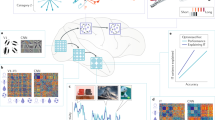
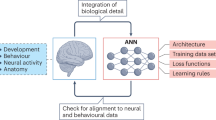








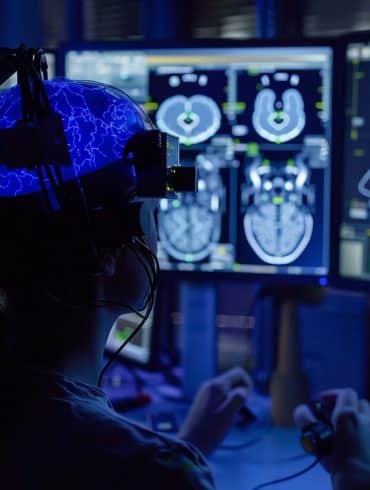
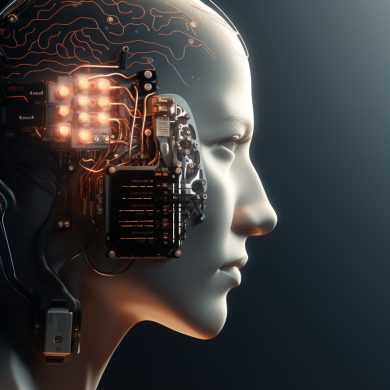
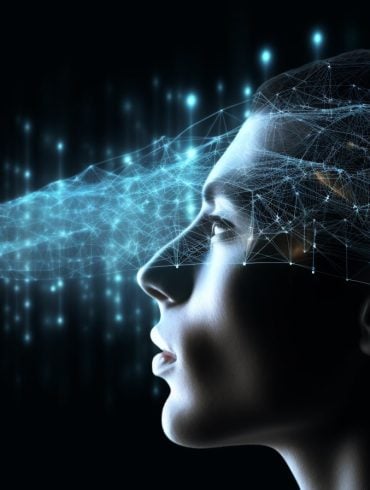


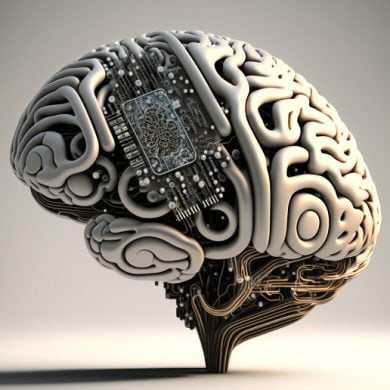
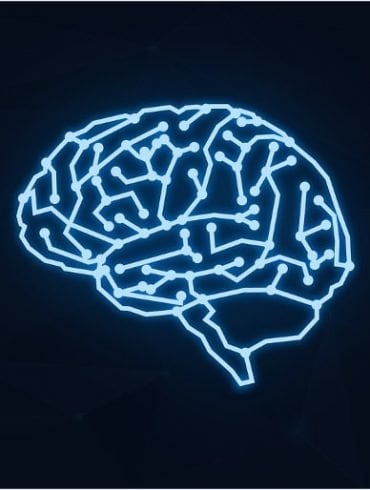
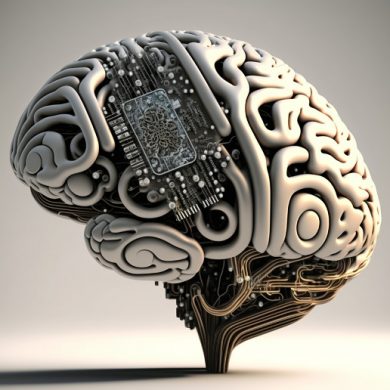
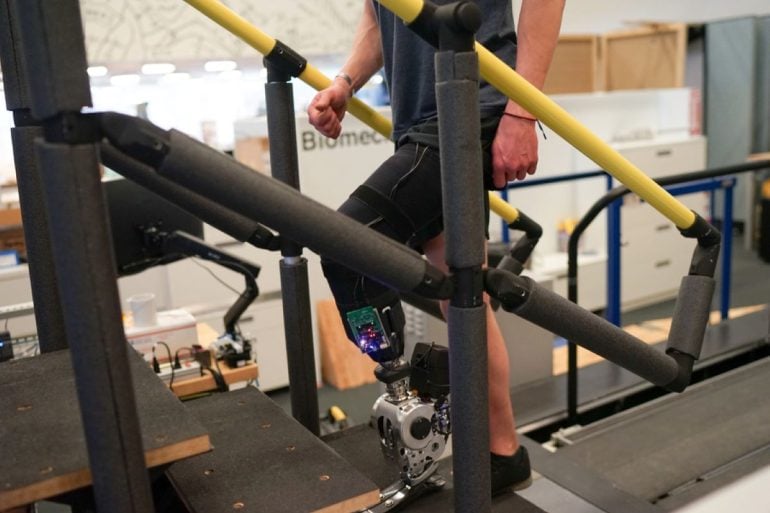




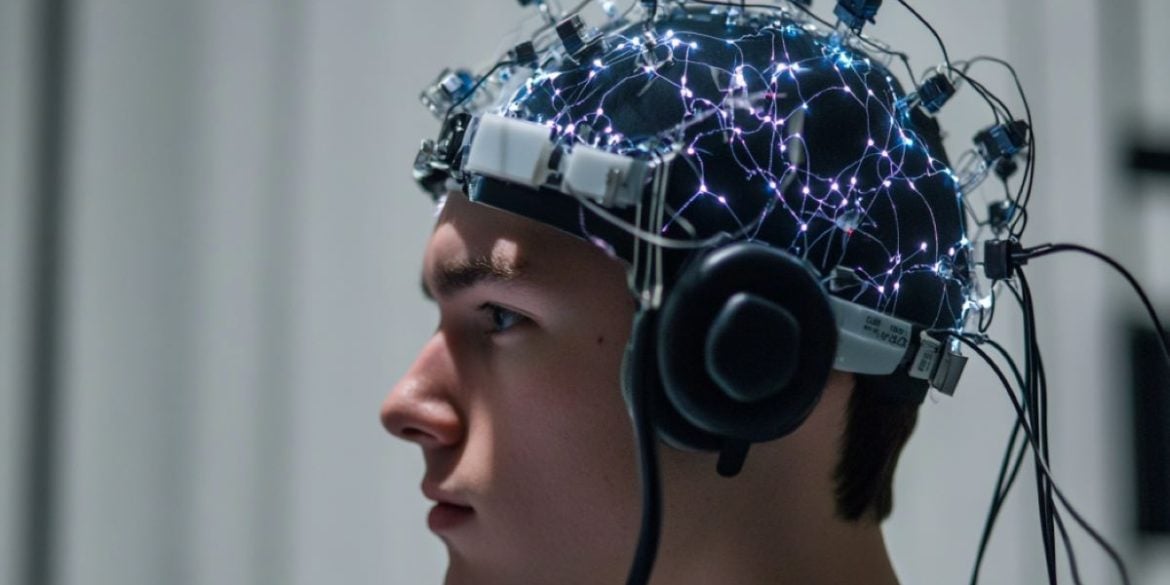
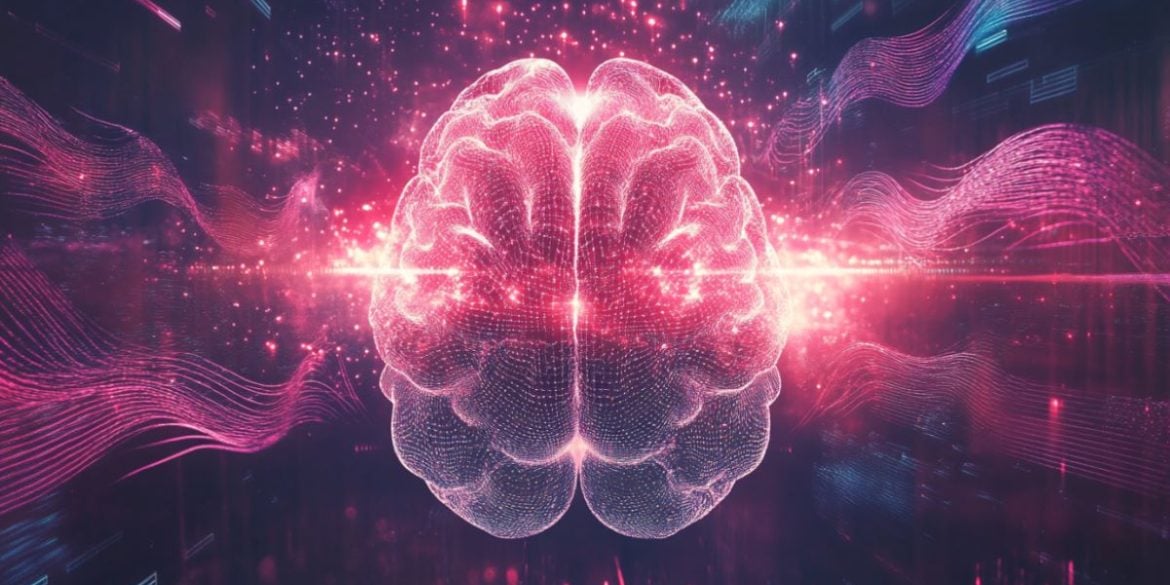
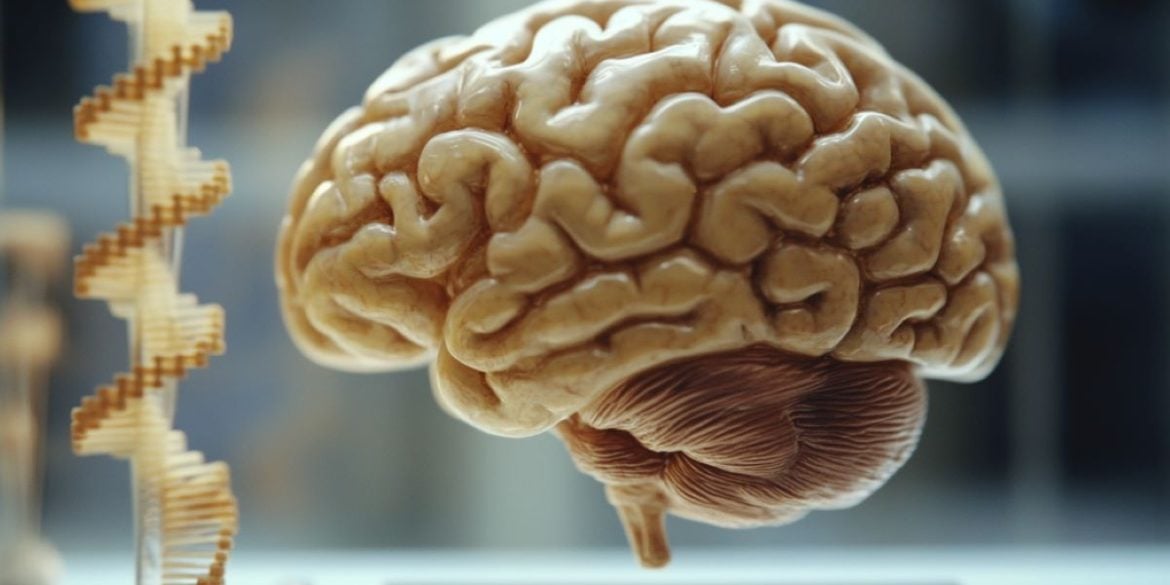
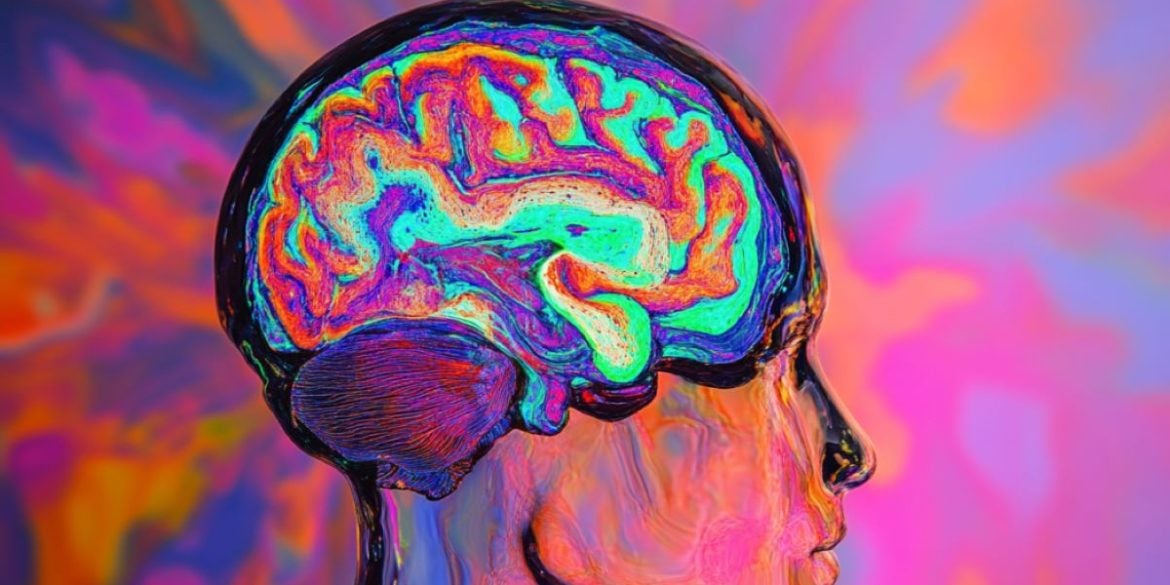
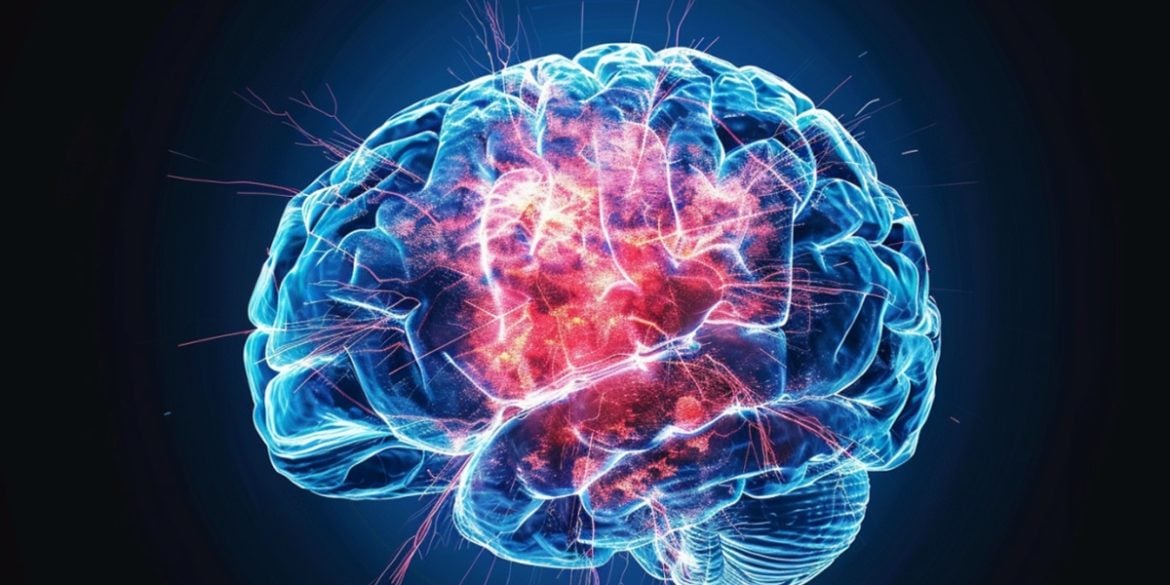
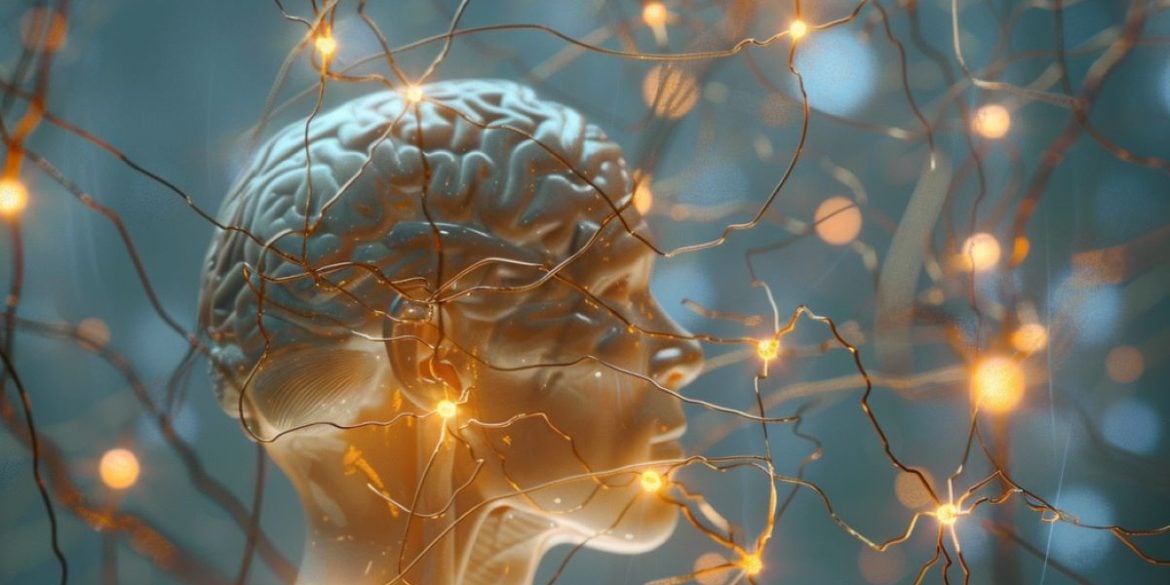

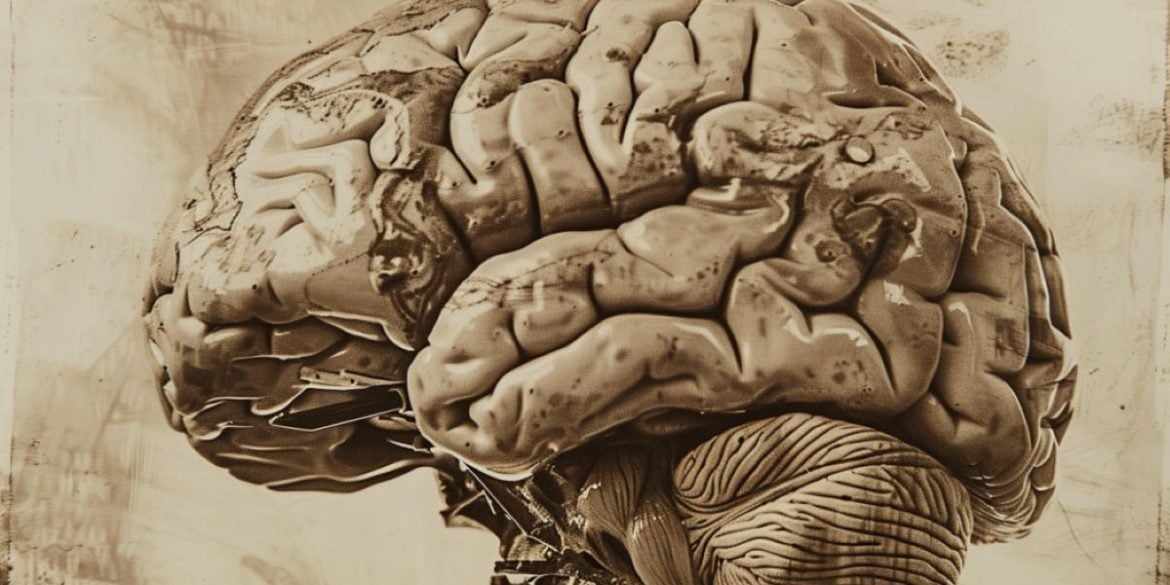


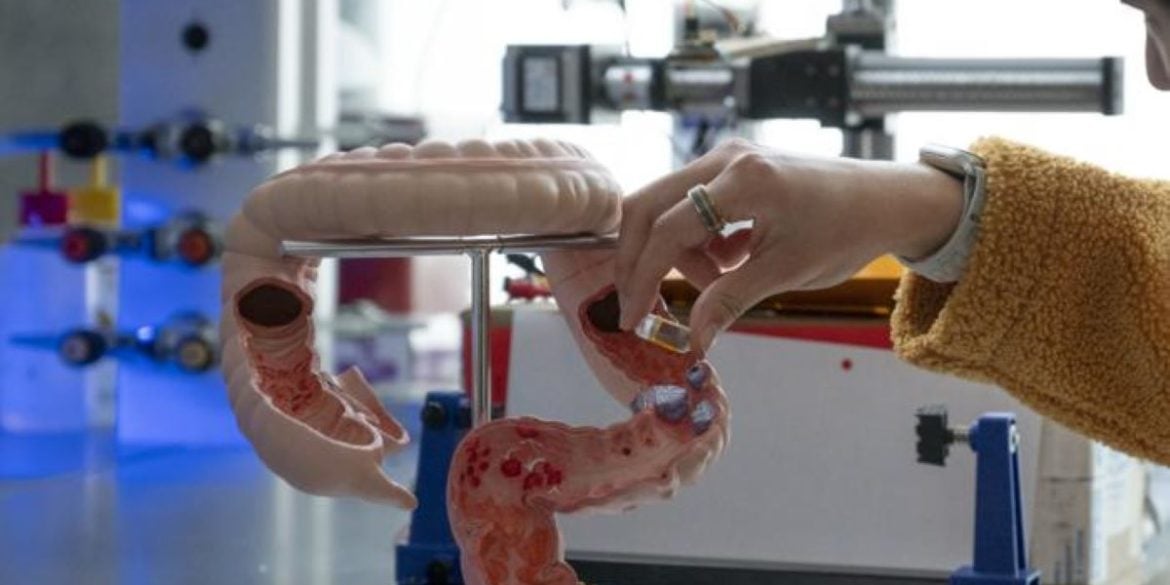
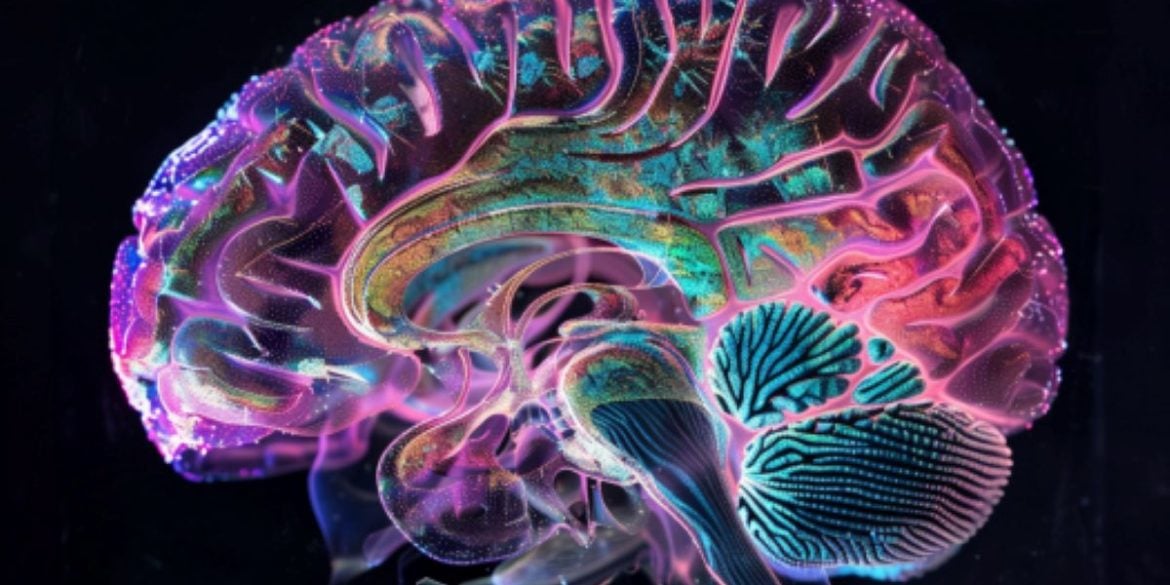

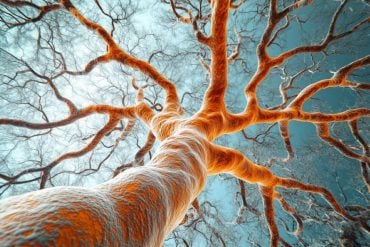
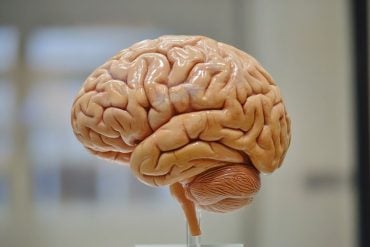
COMMENTS
Neuroscience is a multidisciplinary science that is concerned with the study of the structure and function of the nervous system. It encompasses the evolution, development, cellular and molecular ...
Read the latest Research articles from Nature Neuroscience. ... Understanding brain development and systems linked to behavioral change is a key goal in population neuroscience. The authors show ...
Neuroscience News -- ScienceDaily
Nature Neuroscience
8 Stunning New Images From Neuroscience. This is not a work of art. It's an image of microscopic blood flow in a rat's brain, taken with one of many new tools that are yielding higher levels ...
A long-running research endeavor reveals key chemical players that cement memories in place—and still more have yet to be discovered Simon Makin $1 for Digital Access
Epic science inside a cubic millimeter of brain - Harvard Gazette
New open-source tool helps to detangle the brain. ... neuroscience, nanoscience, and astrophysics, respectively. ... Study models how ketamine's molecular action leads to its effects on the brain. New research addresses a gap in understanding how ketamine's impact on individual neurons leads to pervasive and profound changes in brain ...
Neuroscience News Science Magazine - Research Articles ...
Neuroscience
The wager, settled at a New York University conference in June, was over whether neuroscience would be able to supply a "clear" neural signature of consciousness by this year.
Neuroscience News posts science research news from labs, universities, hospitals and news departments around the world. Science articles cover neuroscience, psychology, AI, robotics, neurology, brain cancer, mental health, machine learning, autism, Parkinson's, Alzheimer's, brain research, depression and other sciences.
Cognitive neuroscience - Latest research and news
This Year's Most Thought-Provoking Brain Discoveries
We truly appreciate all of you and hope you will return throughout 2024 for more exciting, daily updates from the world of neuroscience and cognitive sciences. In no particular order, here are our top 10 neuroscience research articles of 2023. Happy New Year! 10 - Lab-Grown Human Brain Organoids Go Animal-Free.
The new issue of Stanford Medicine magazine features articles about developments in neuroscience and treatments for conditions affecting the brain and nervous system. ... It was a tough sell to other neurosurgeons, but research by Gregory Albers, MD, and a team of researchers eventually succeeded in extending the window for effective treatment ...
New frontiers in neuroscience
Neuroimaging has been a cornerstone of human cognitive neuroscience and mental health research for decades, significantly advancing our understanding of the brain mechanisms underlying cognition ...
A new machine learning model, AutMedAI, can predict autism in children under two with nearly 80% accuracy, offering a promising tool for early detection and intervention. The model analyzes 28 parameters available before 24 months, such as age of first smile and eating difficulties, to identify children likely to have autism.
Stroke patients who survive a blood clot in the brain's blood vessels are prone to developing new blockages during their recovery periods, even if they receive vessel-clearing interventions. ... Office of Neuroscience Research. MSC 8111-96-07-7122. 4370 Duncan Ave. St. Louis, Missouri 63110. [email protected]. Getting Around. Campus maps ...
Top 100 in Neuroscience. This collection highlights our most downloaded* neuroscience papers published in 2021. Featuring authors from around the world, these papers showcase valuable research ...
Through the Collaborative Research in Computational Neuroscience (CRCNS) program, the U.S. National Science Foundation (NSF), National Institutes of Health (NIH), and Department of Energy (DOE); the German Federal Ministry of Education and Research (Bundesministerium für Bildung und Forschung, BMBF); the French National Research Agency (Agence ...
Summary: 2022 has been a fantastic year for neuroscience and brain science research.Here, we take a look back over some of the most popular neuroscience research articles of the year. Source: Neuroscience News For over 20 years, Neuroscience News has reported on the latest, ground-breaking neuroscience research.
Major Accountabilities:Contribute to the Biomedical Research drug discovery process by advancing the development and discovery of new in-vivo digital biomarkers.Explore and validate novel in-vivo digital biomarker hypotheses by leveraging expertise in physiology and behavioral neuroscience, combined with an understanding of human disease mechanisms. Demonstrated ability to set up in-vivo study ...
Nature Neuroscience presents a special focus issue that highlights advances in methods, analyses and practices across scales of investigation and subfields of neuroscience. Single-cell ...
Neuroscience research articles are provided. What is neuroscience? Neuroscience is the scientific study of nervous systems. ... A recent study explored the link between cadmium exposure and cognitive decline, finding that higher cadmium levels may be associated with thinking and memory problems in white people. The study followed 2,172 people ...
So, for the time being, let us resist rolling our eyes. Yukiko Goda. Neuroscience research over the past two decades has been catapulted by technological advances enabling manipulation and ...
A new study finds that 40Hz light and sound therapy helps maintain myelin, a crucial brain structure, in Alzheimer's patients. This therapy, which protects neurons and supports brain function, could offer new treatment avenues for neurodegenerative diseases. Researchers discovered that this stimulation enhances neural connections and reduces ...